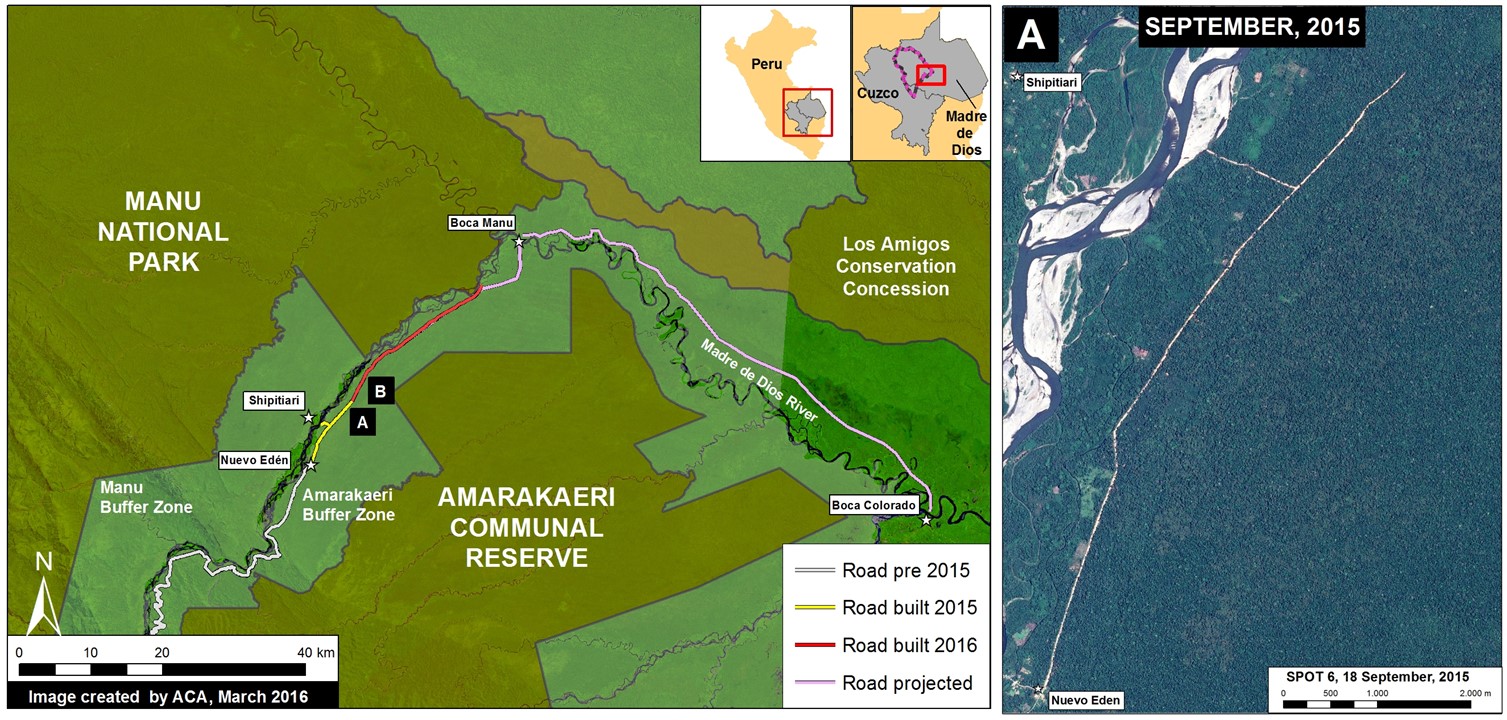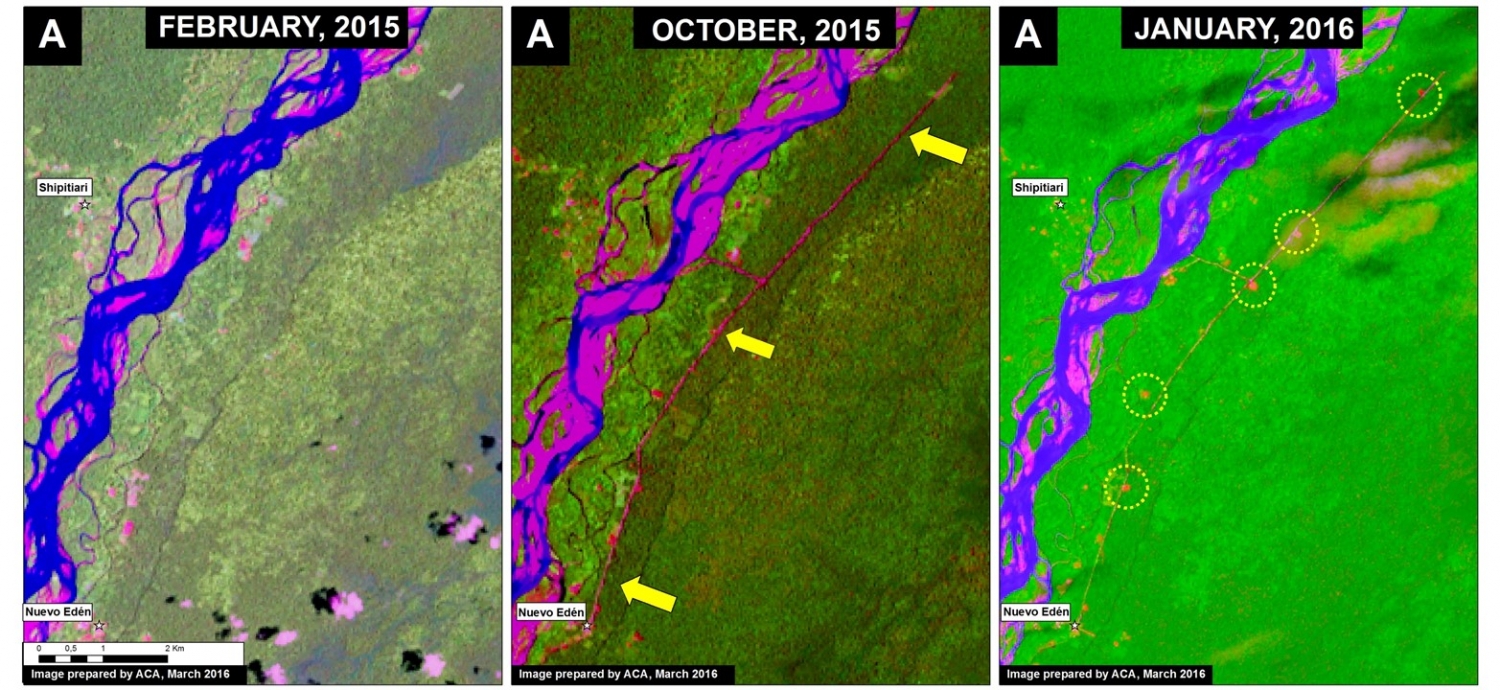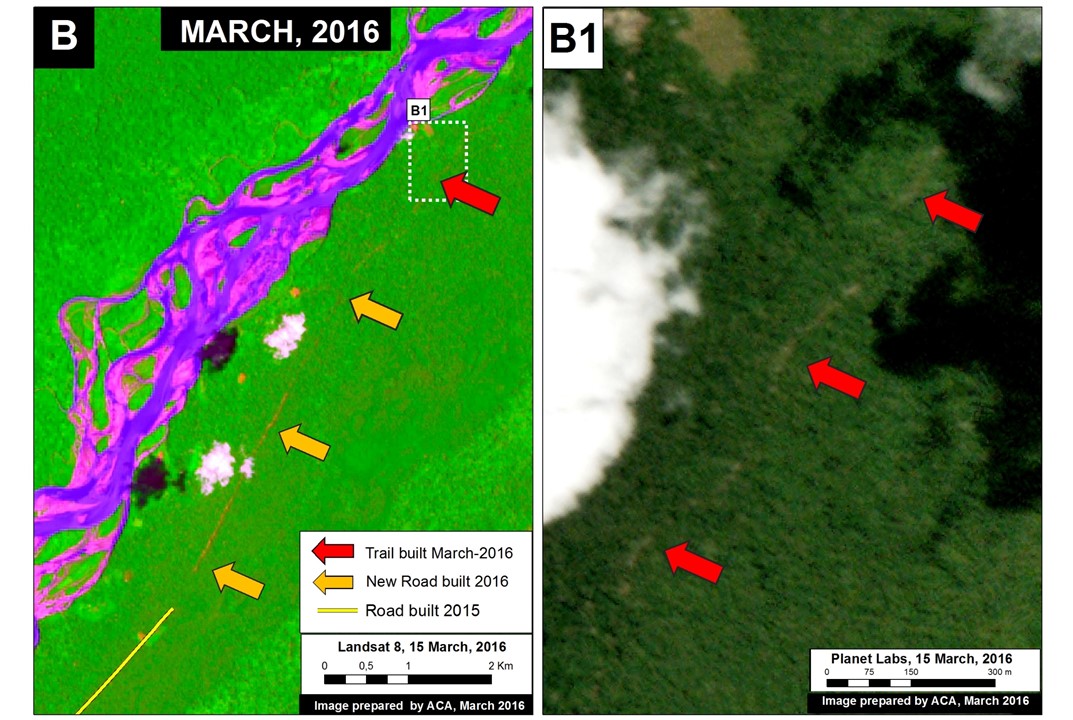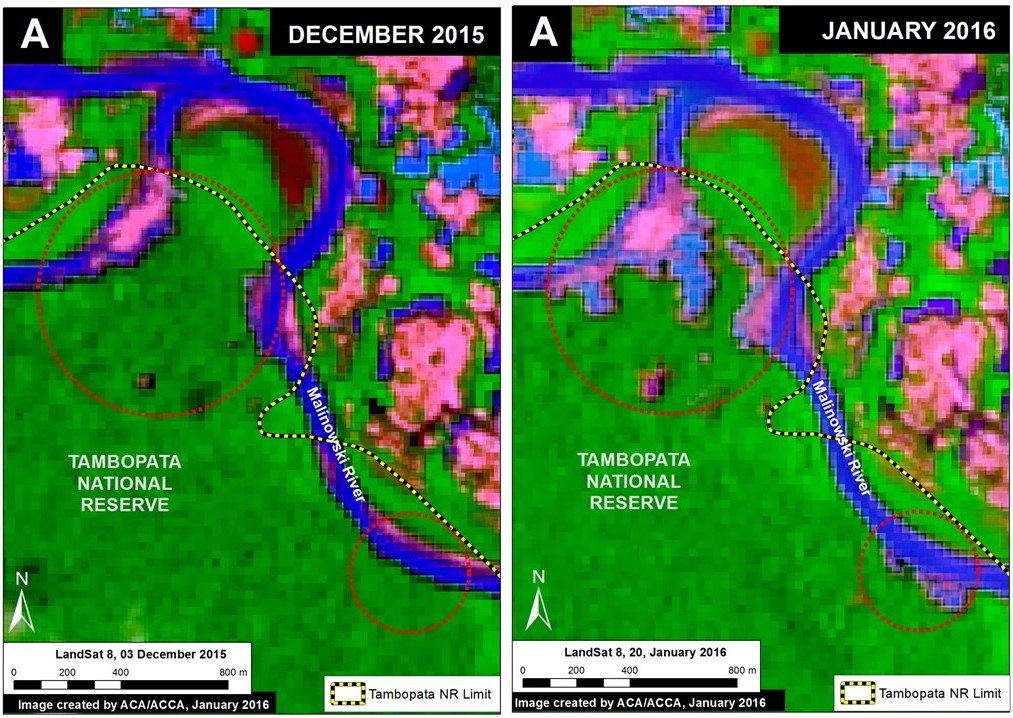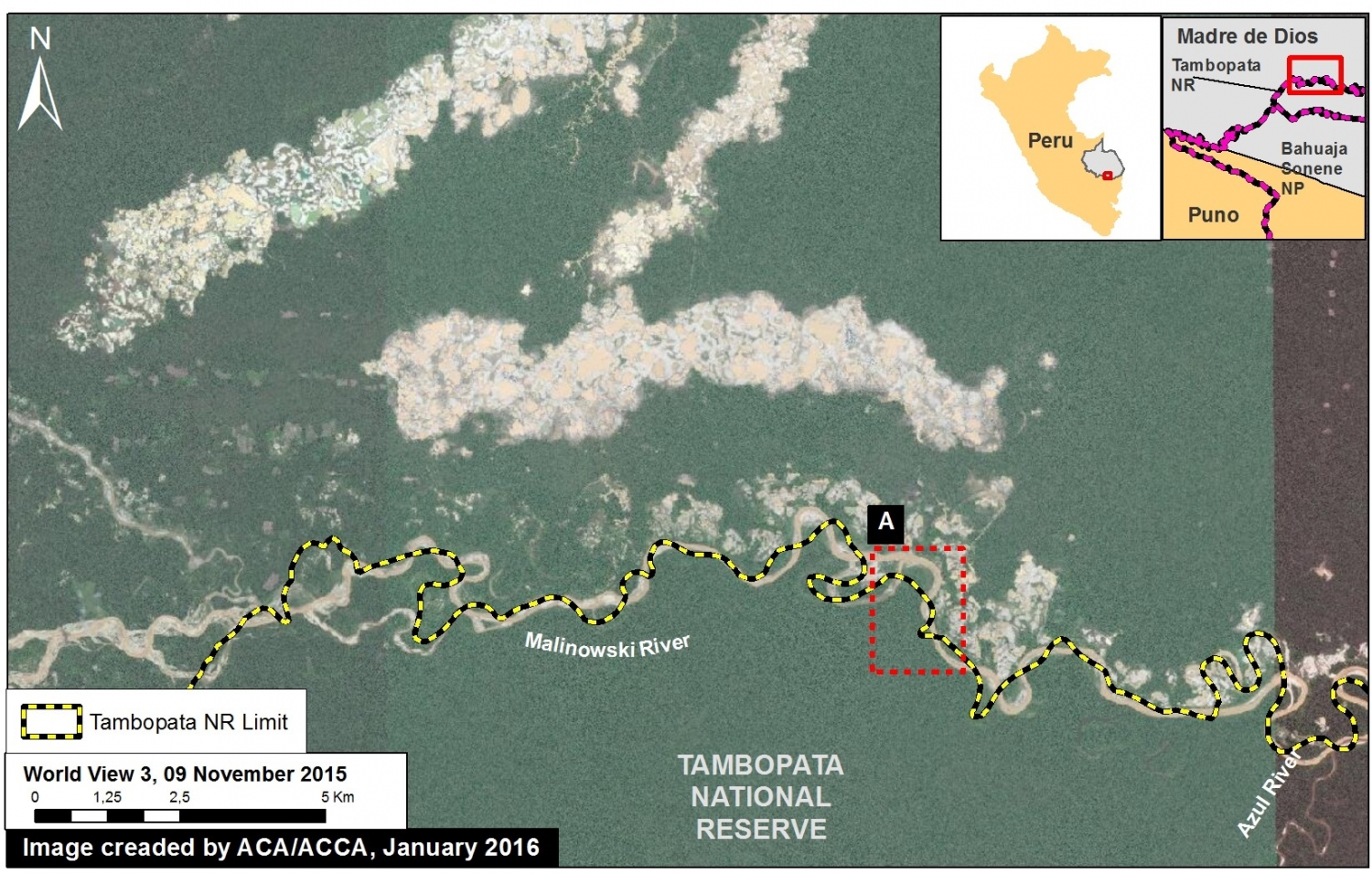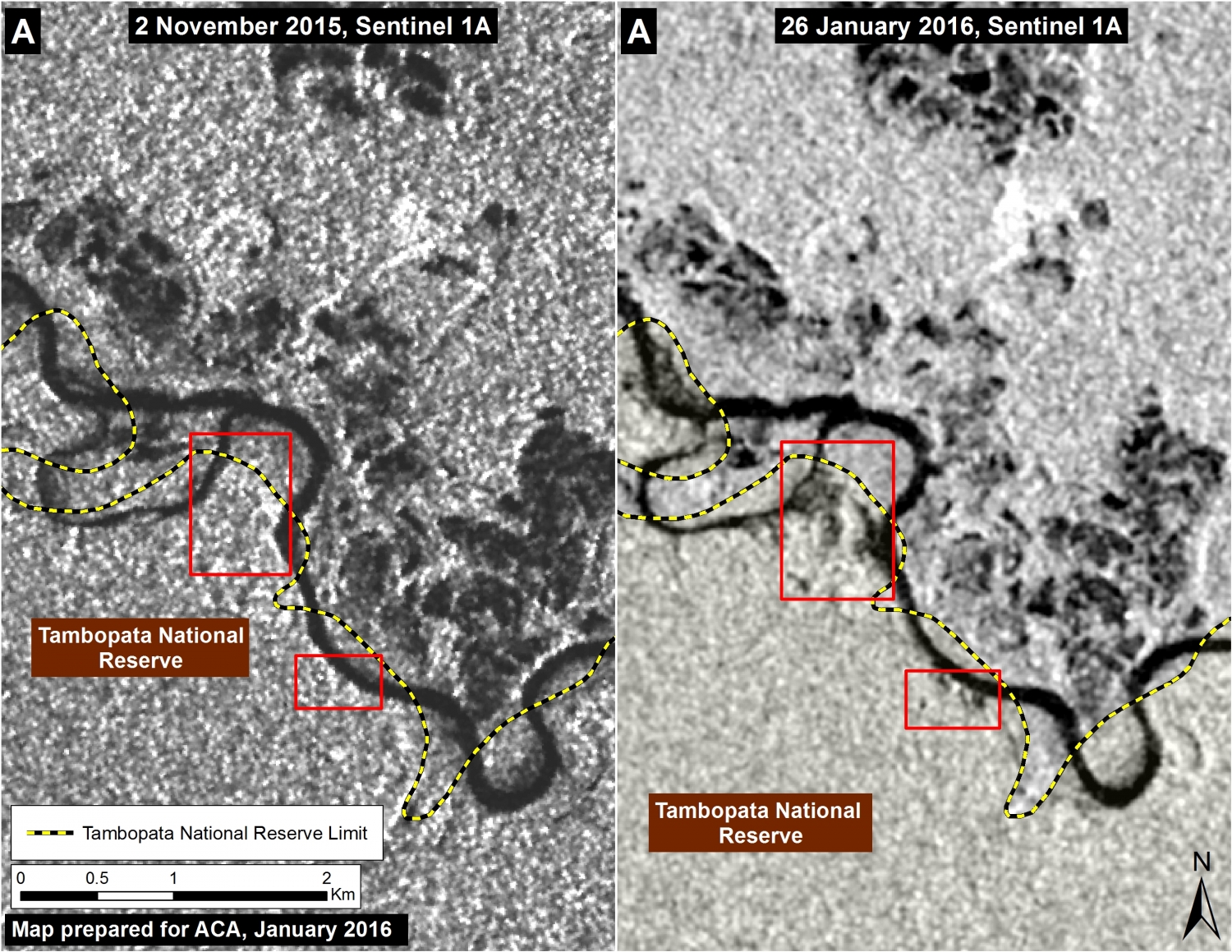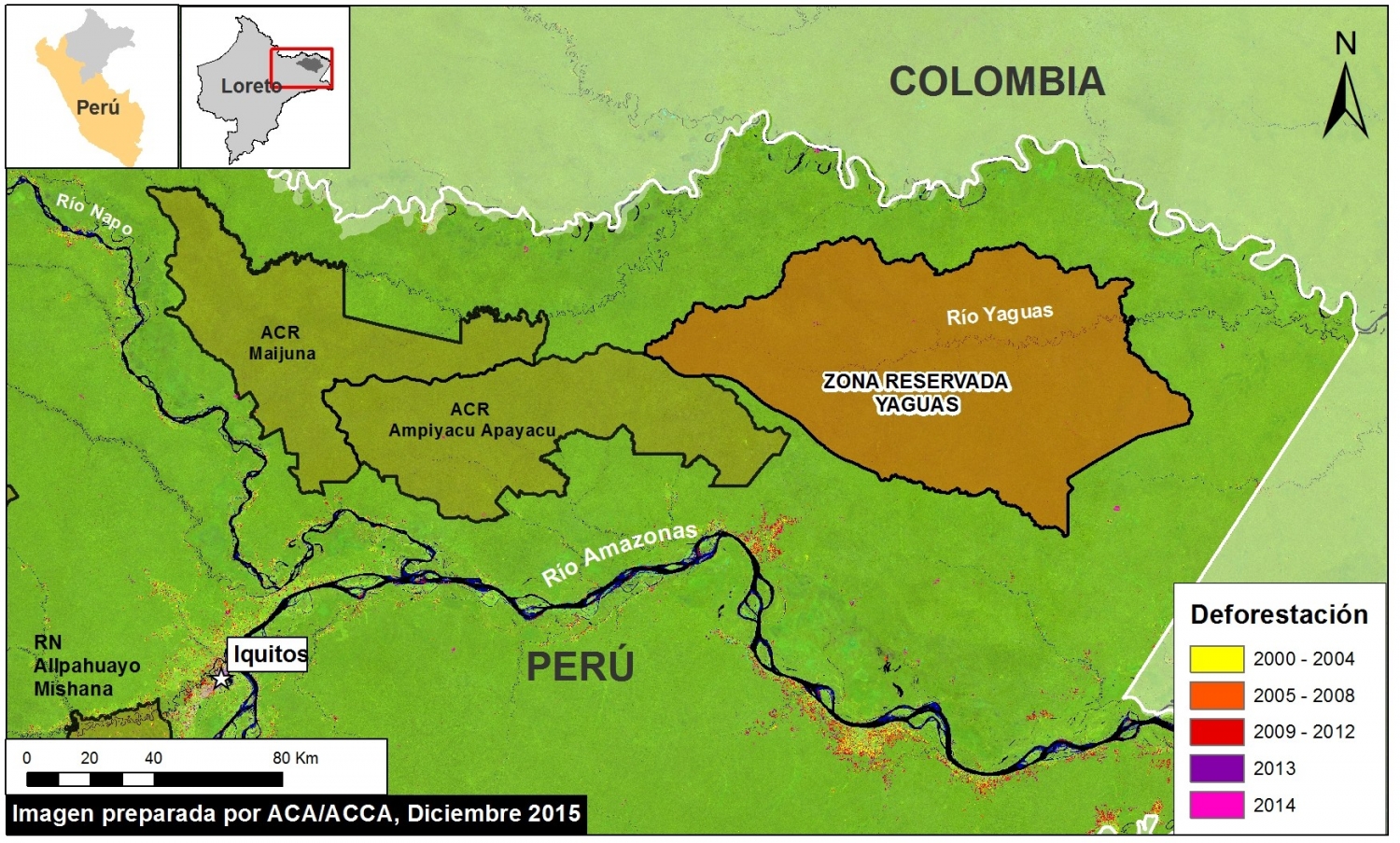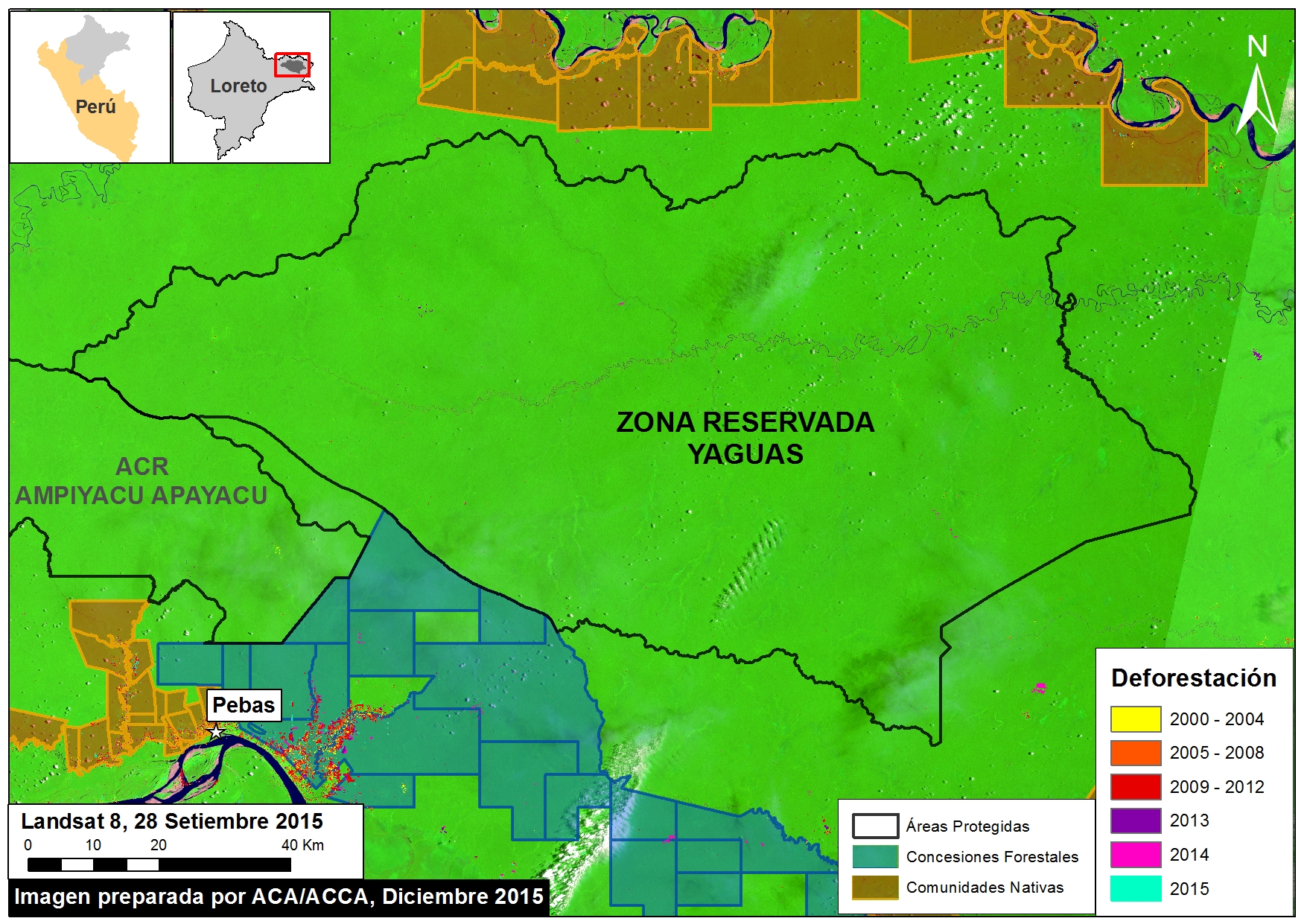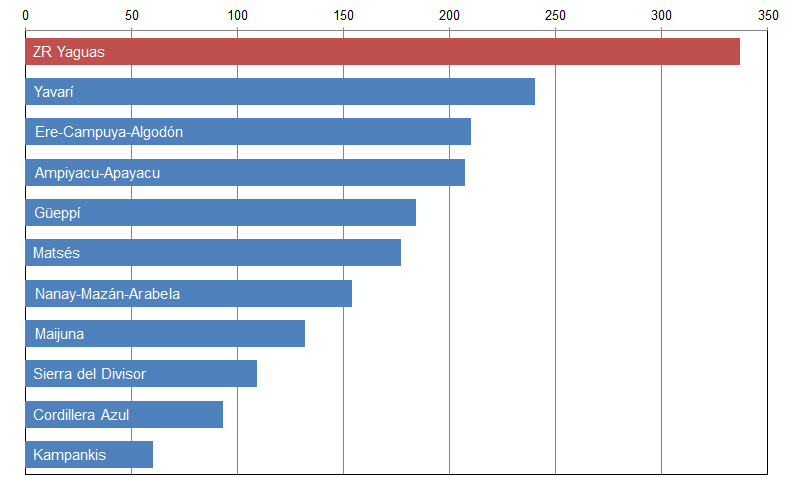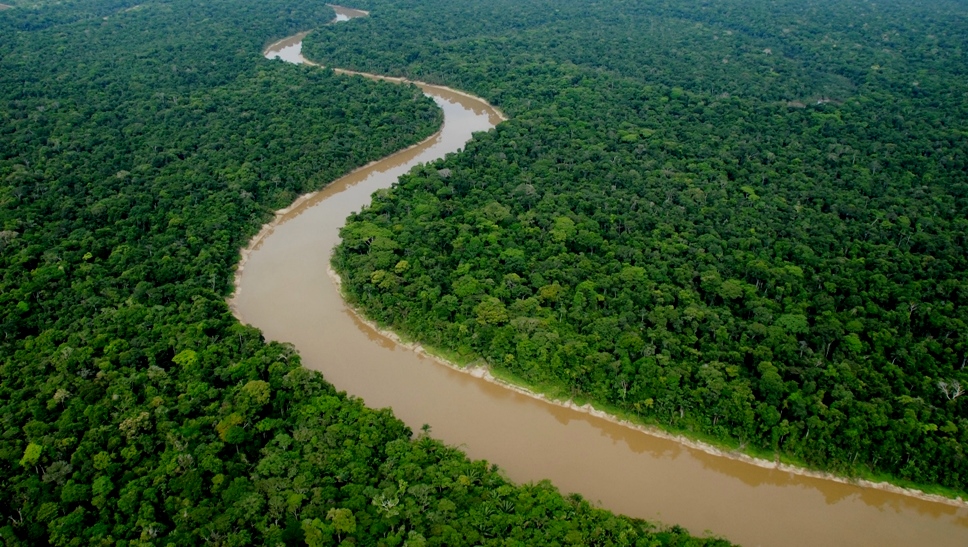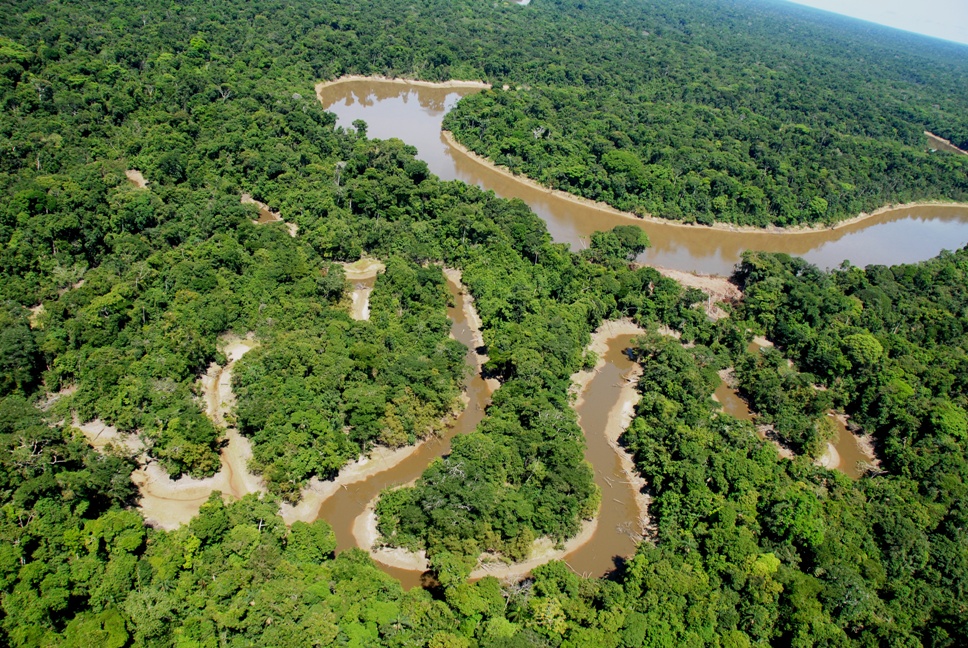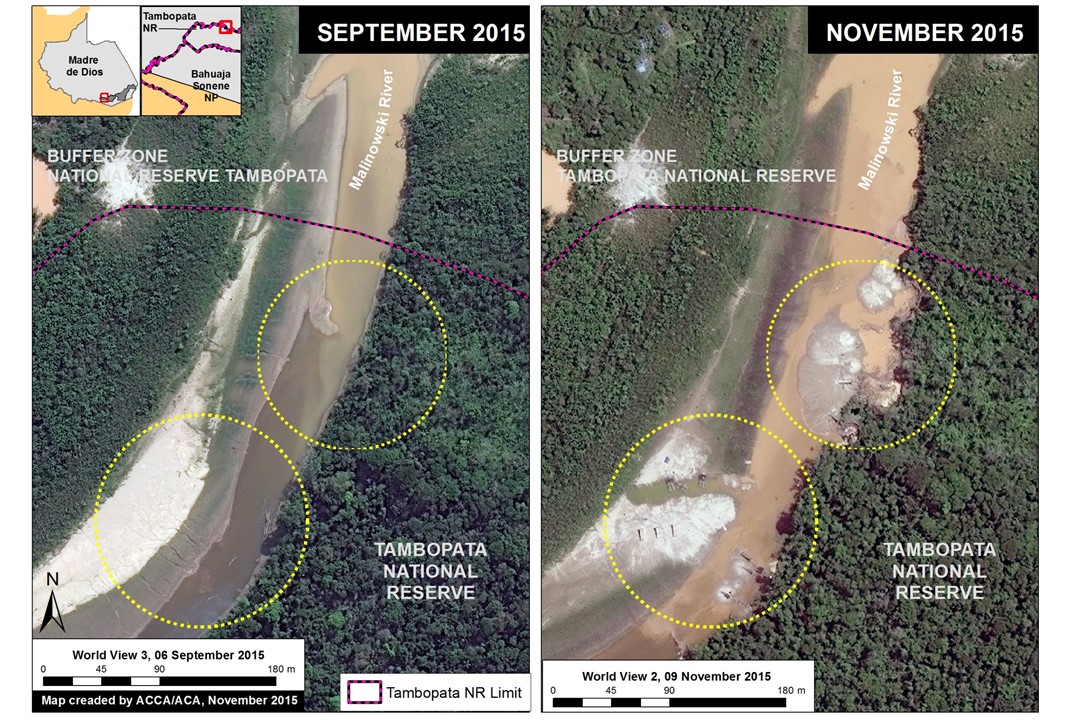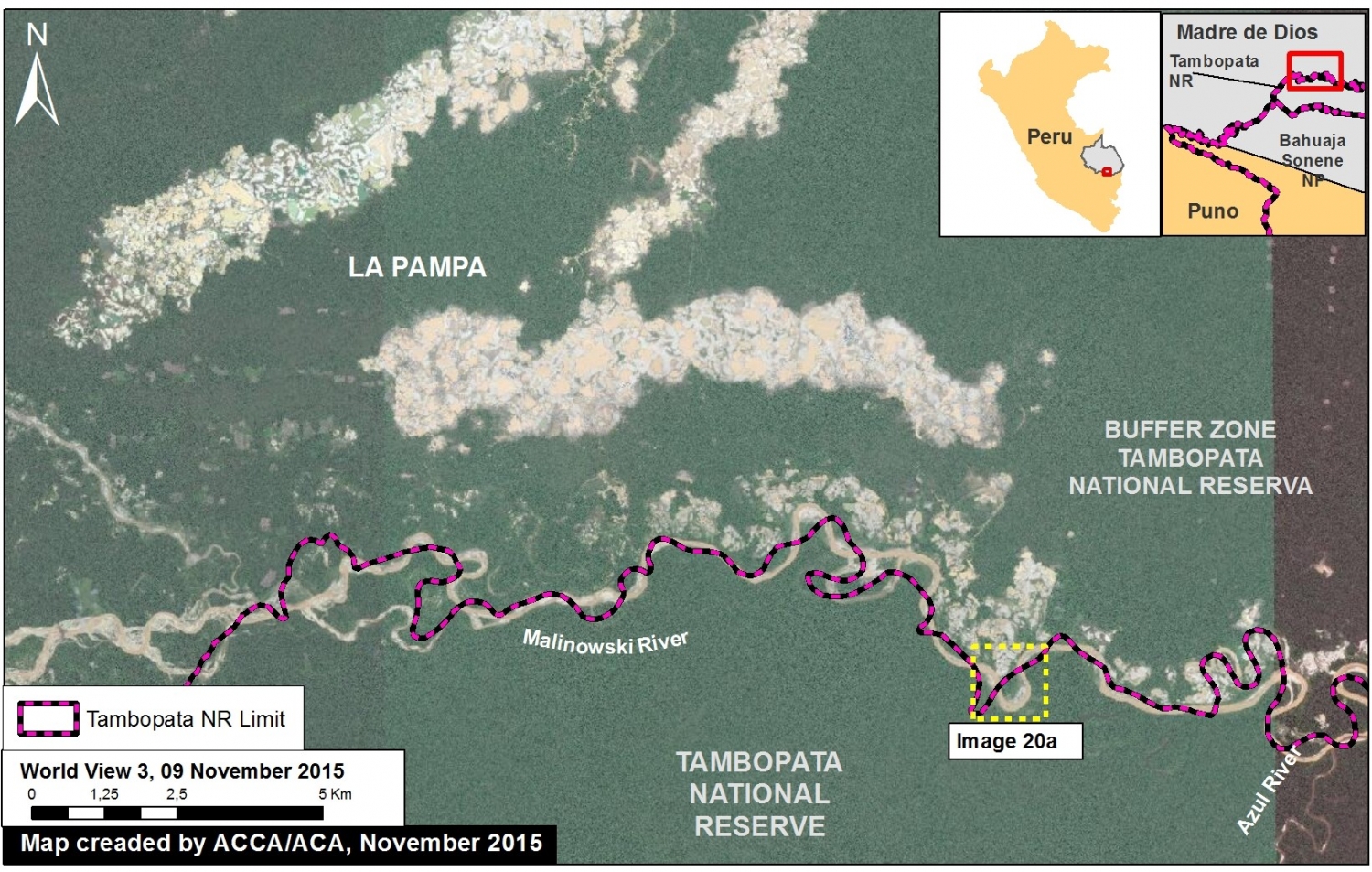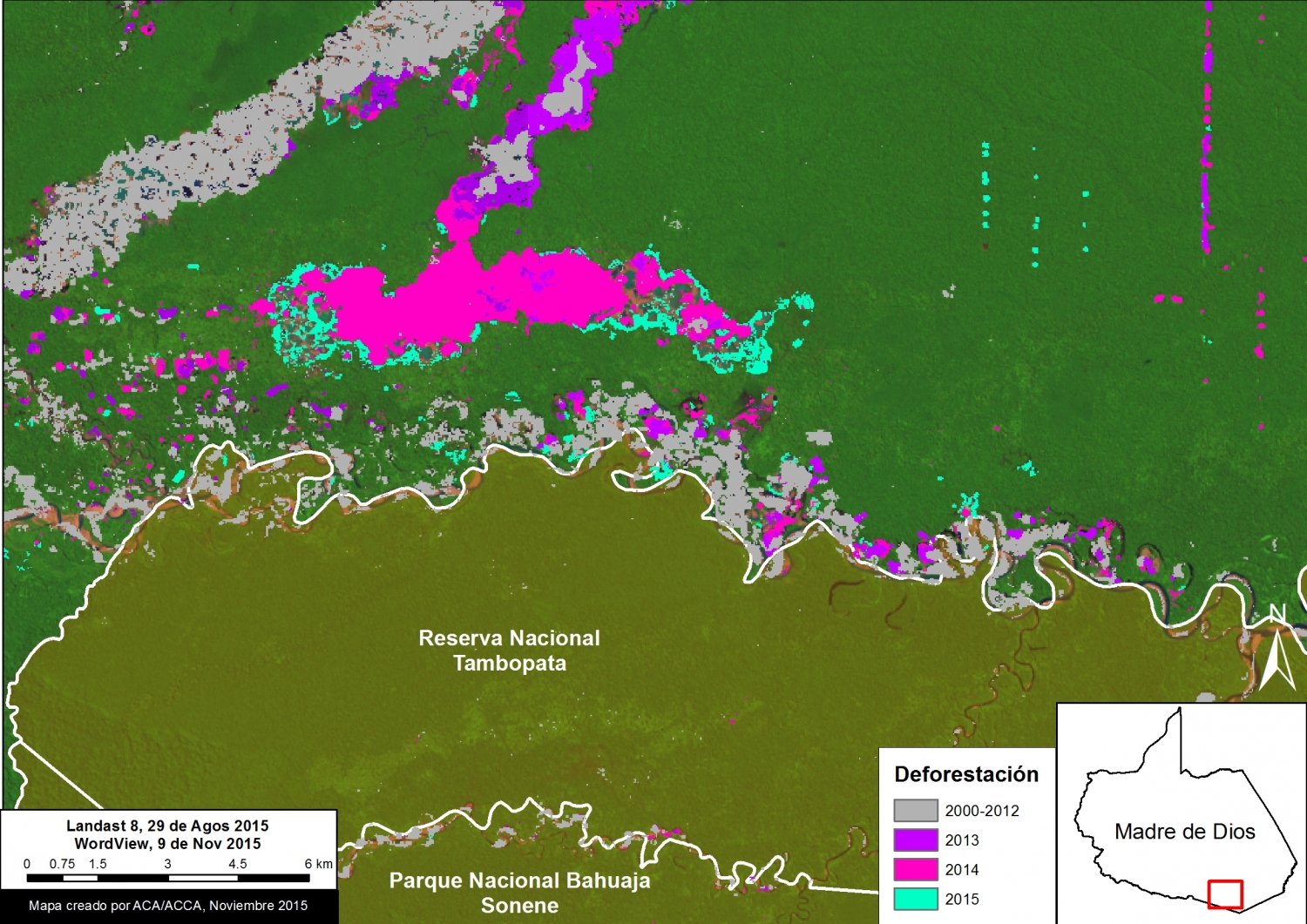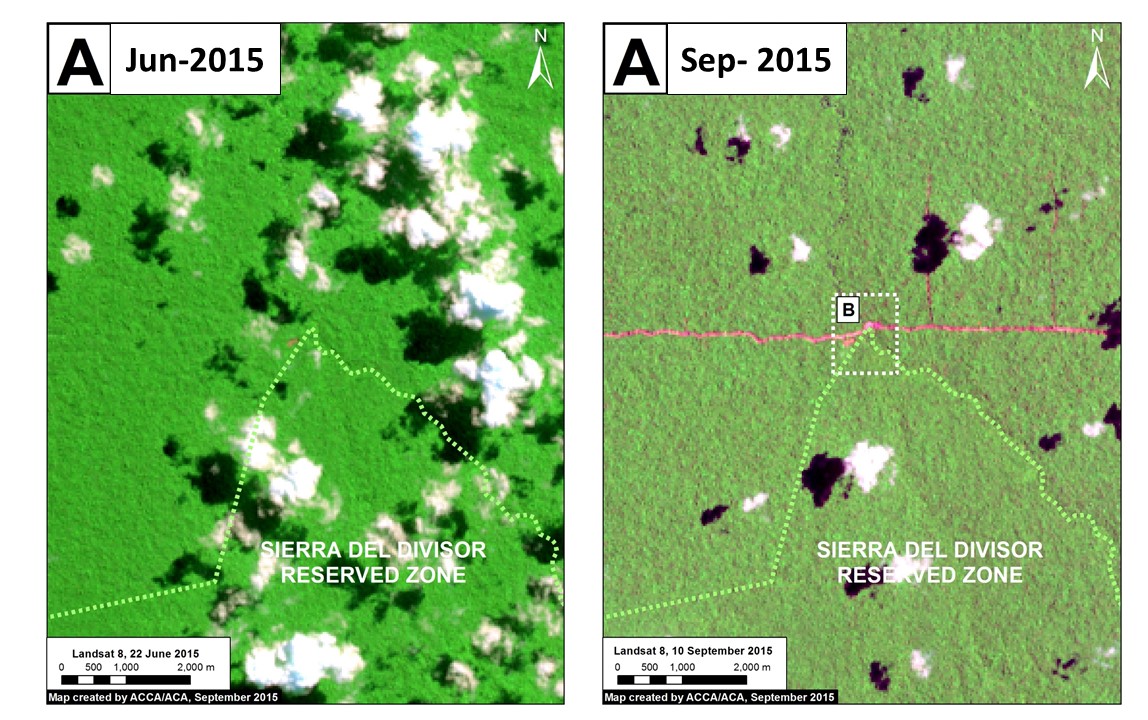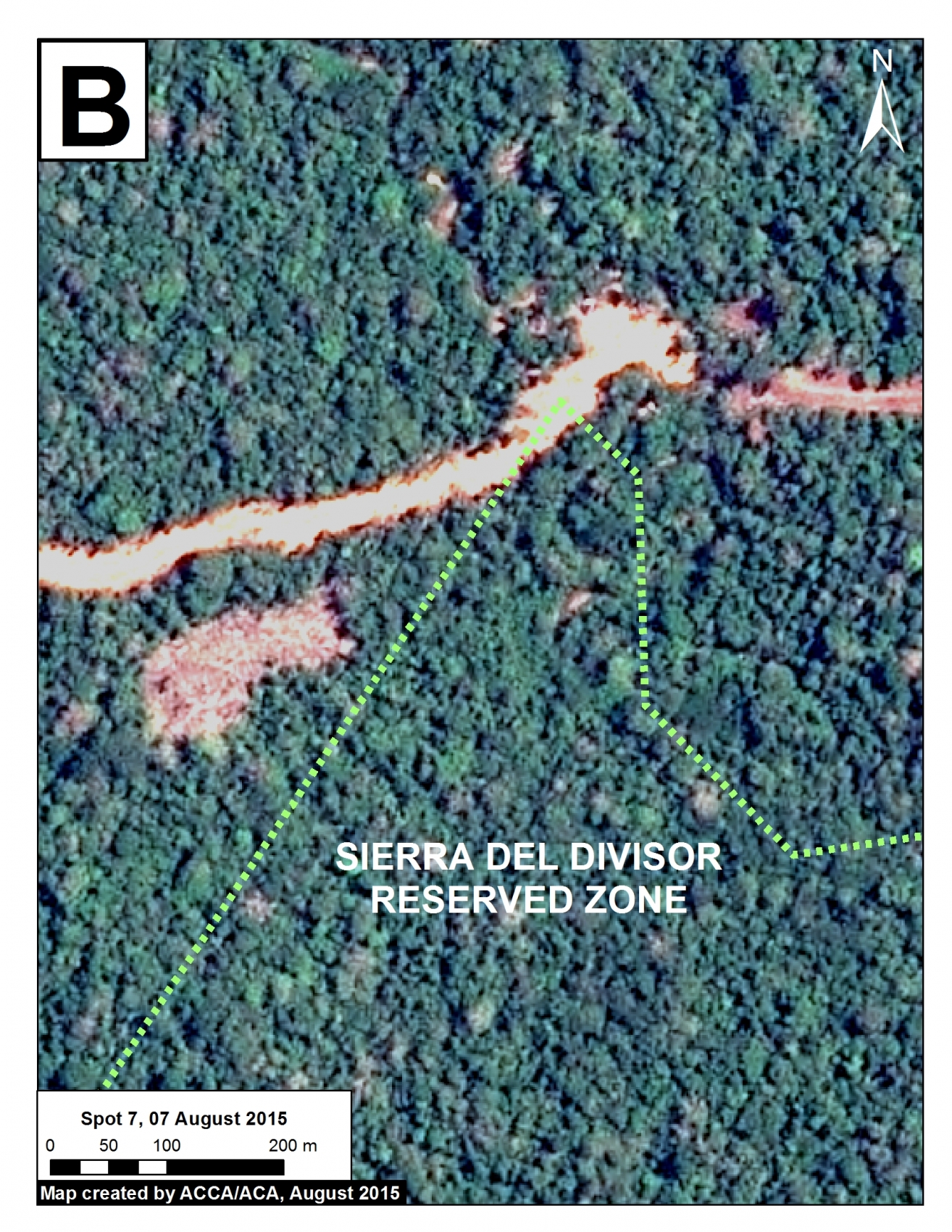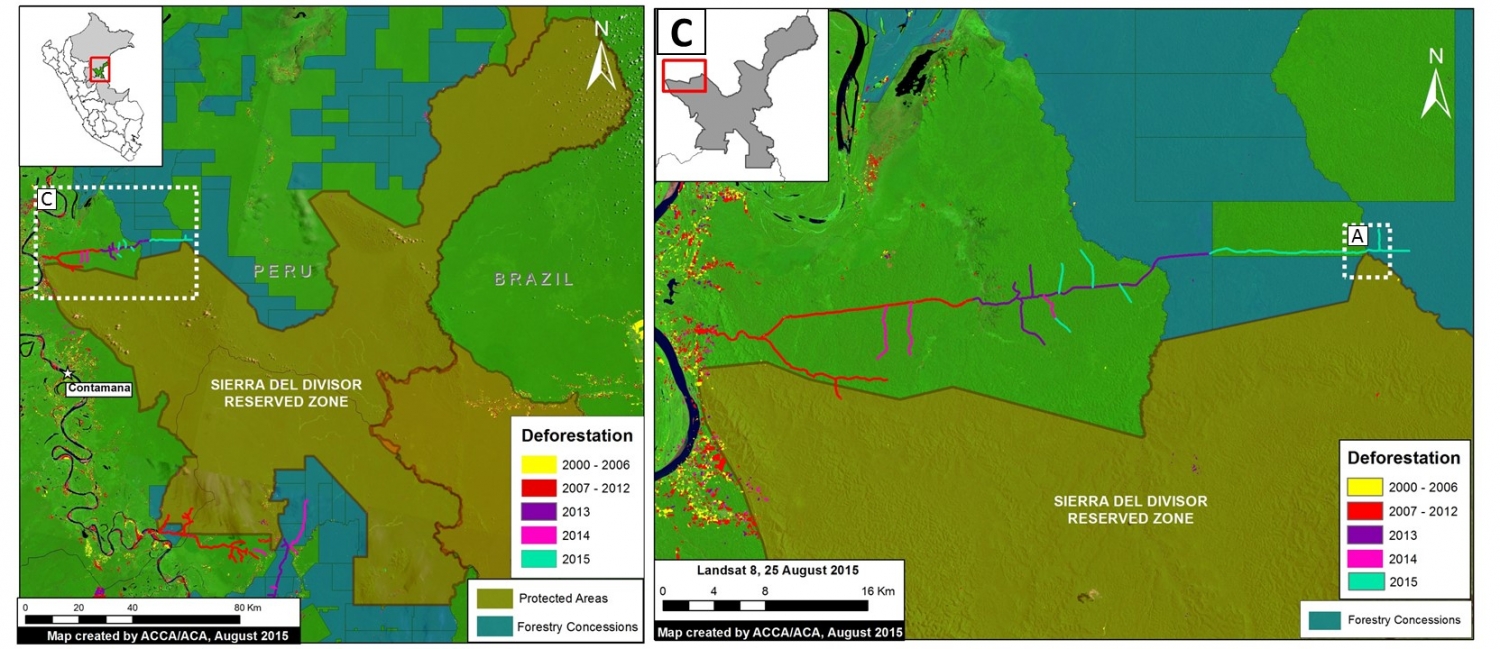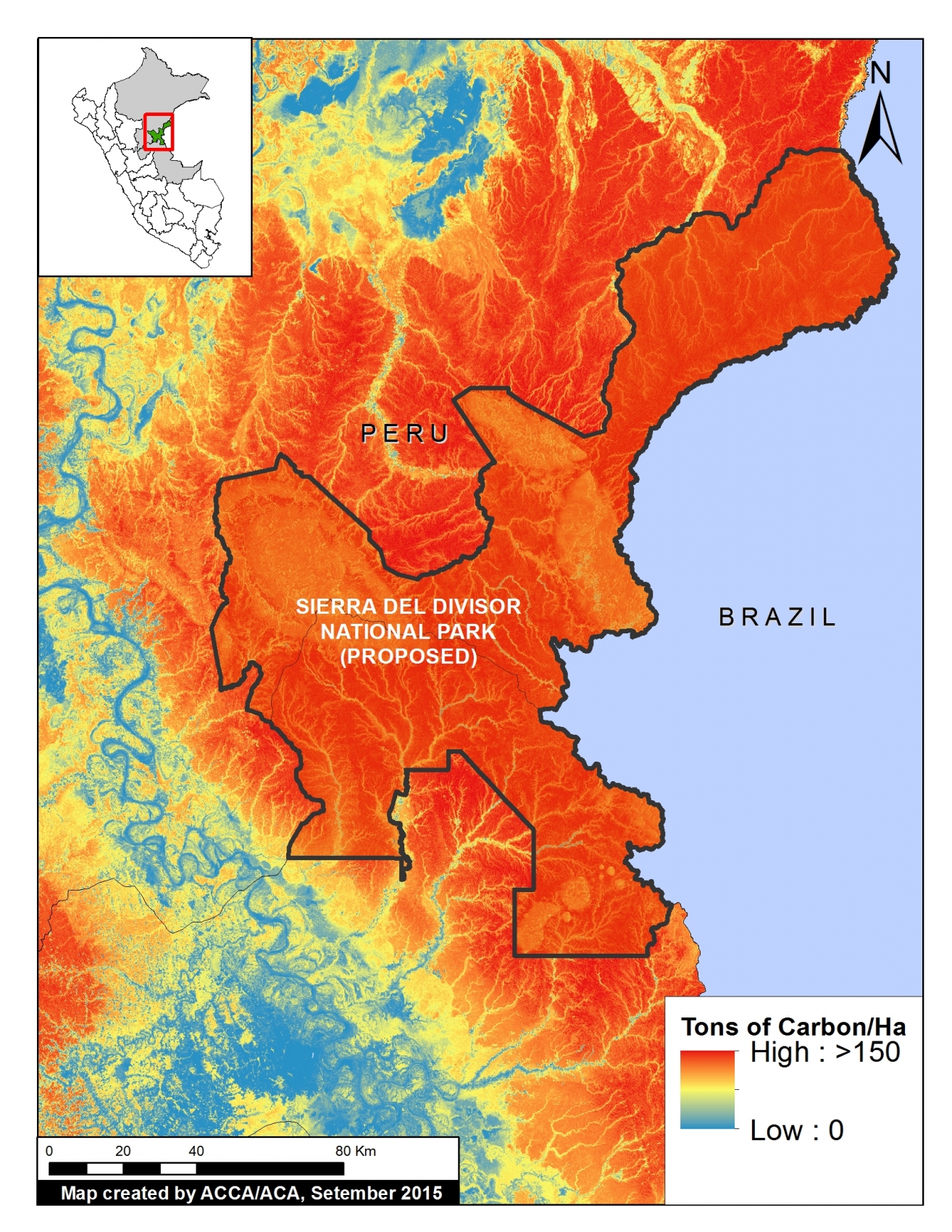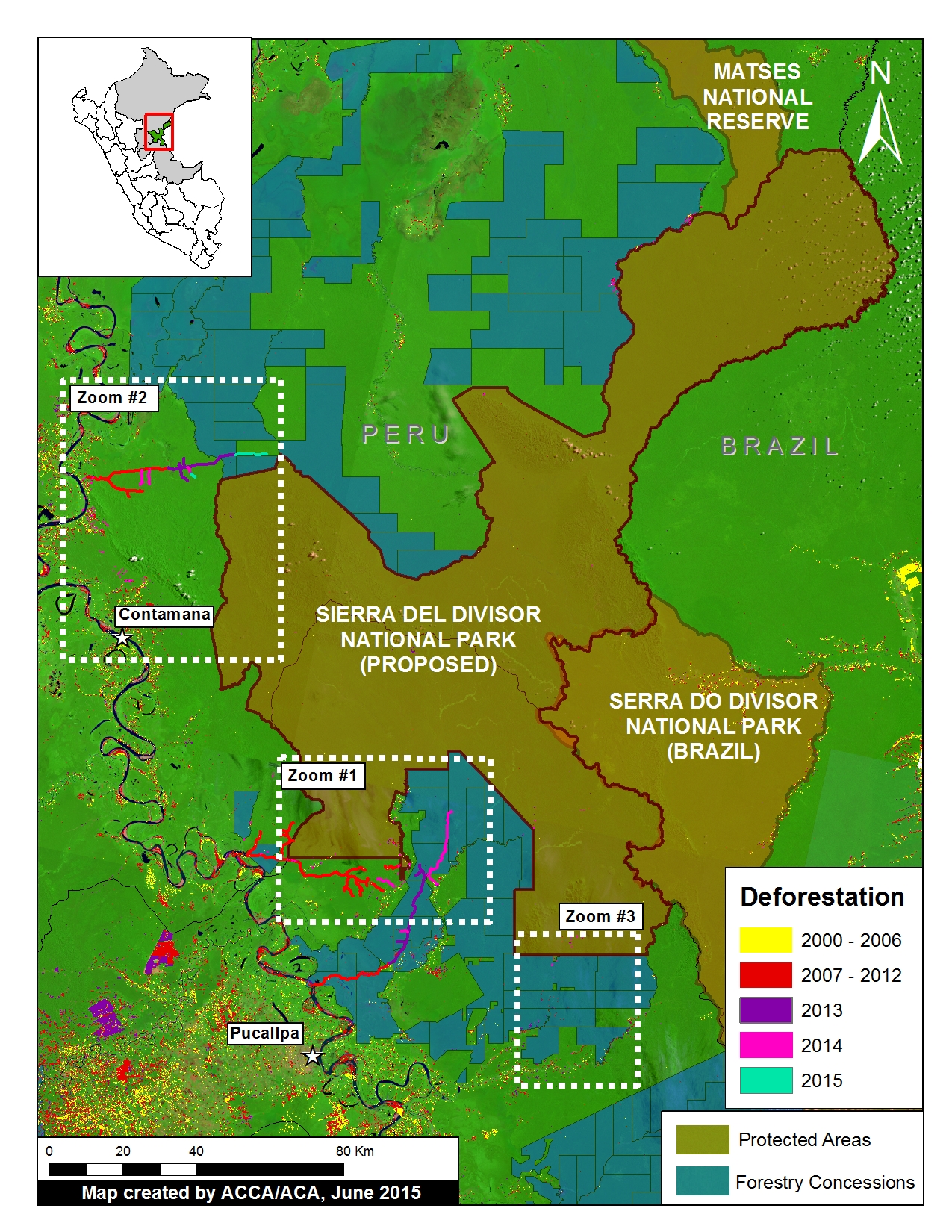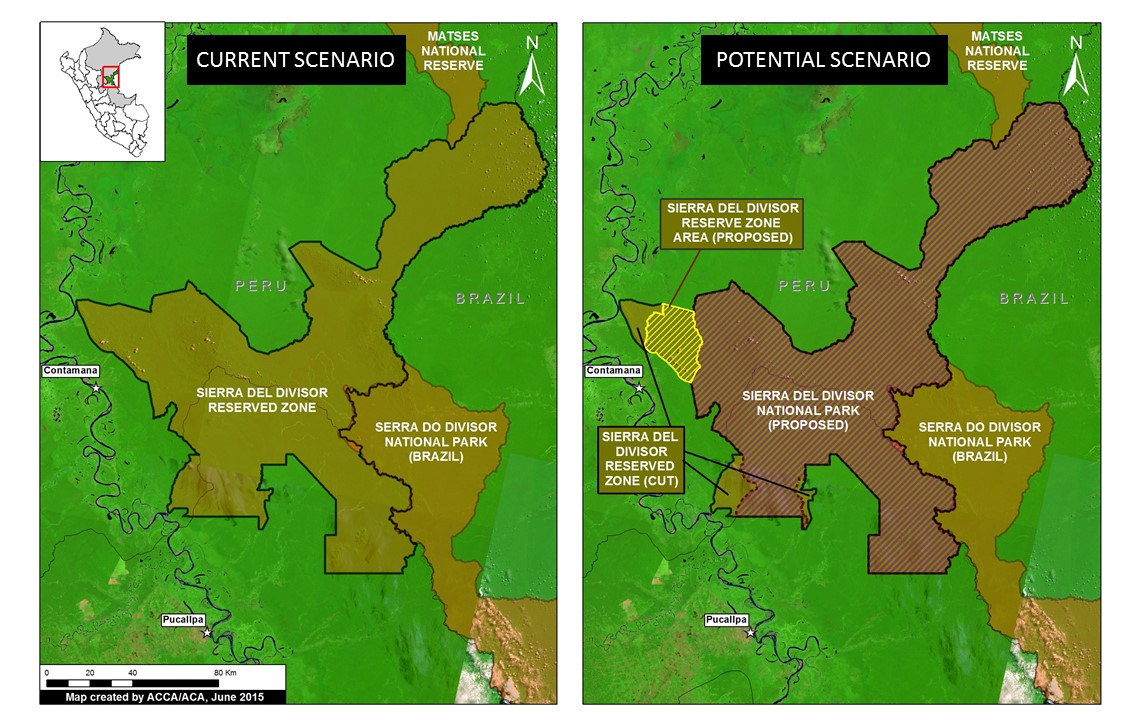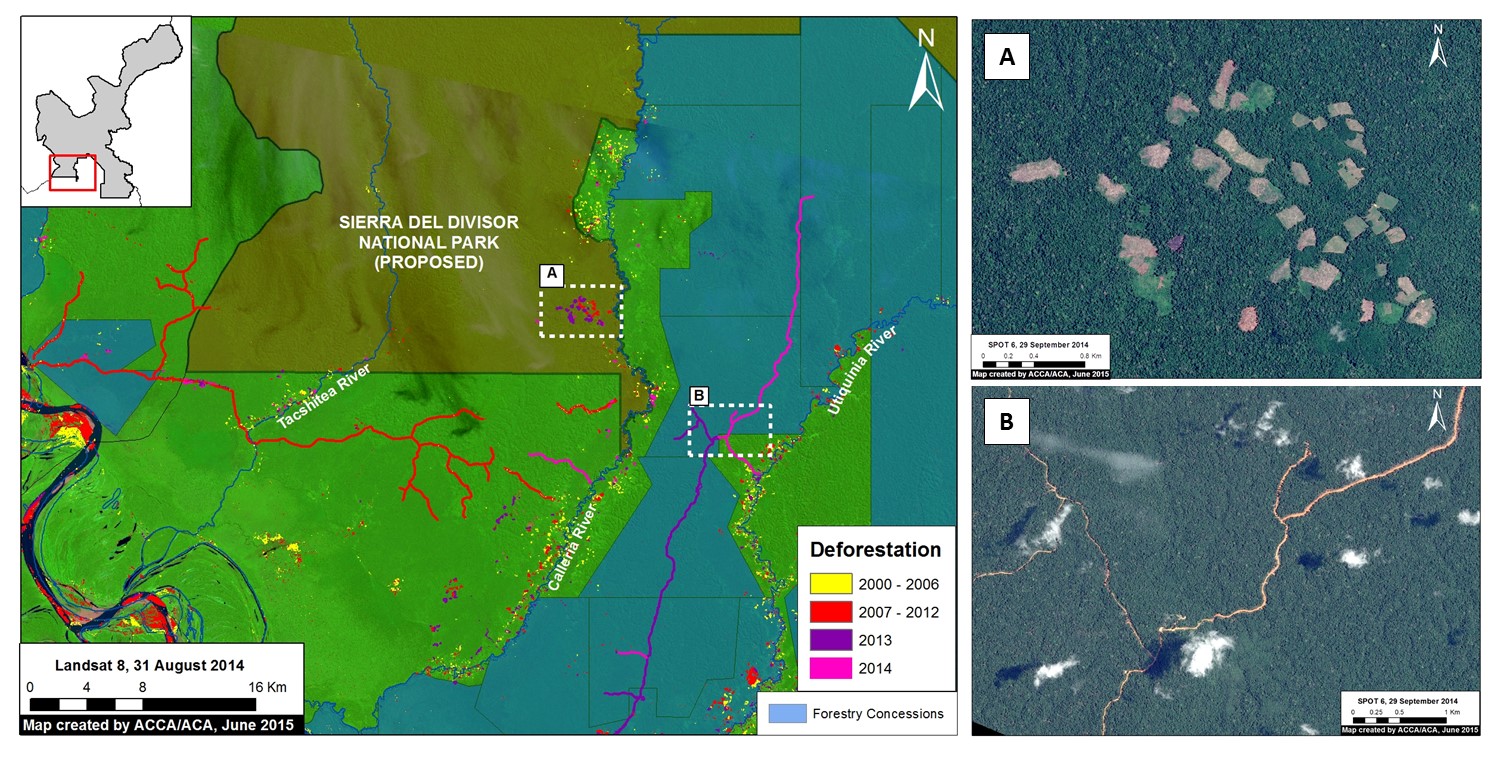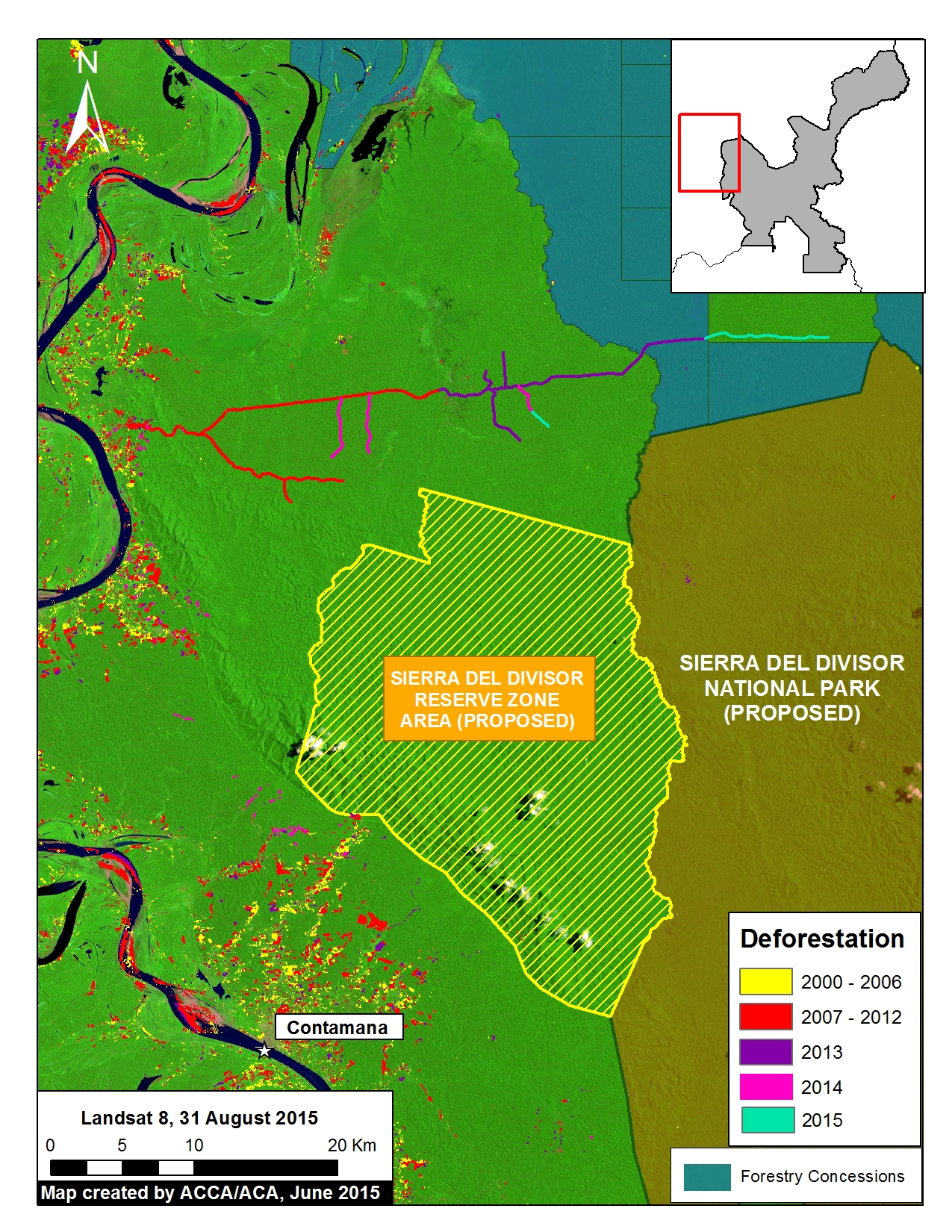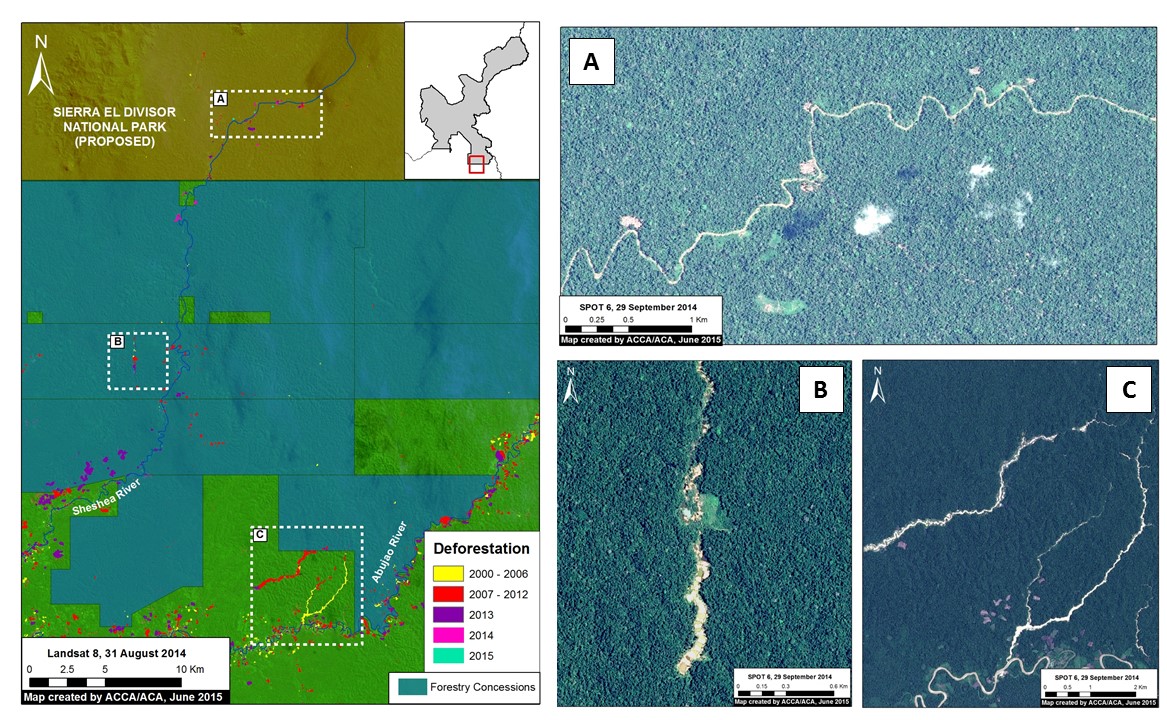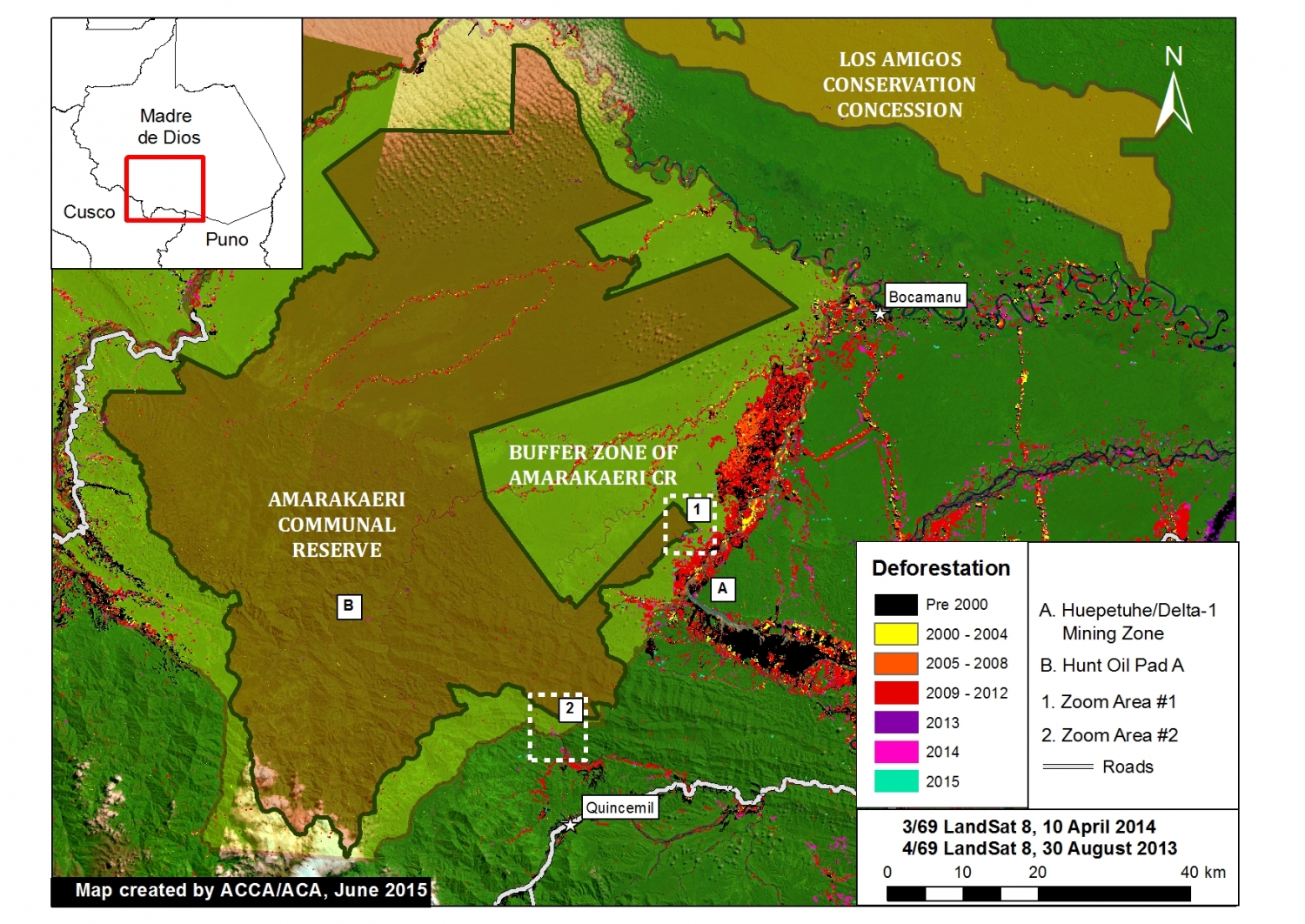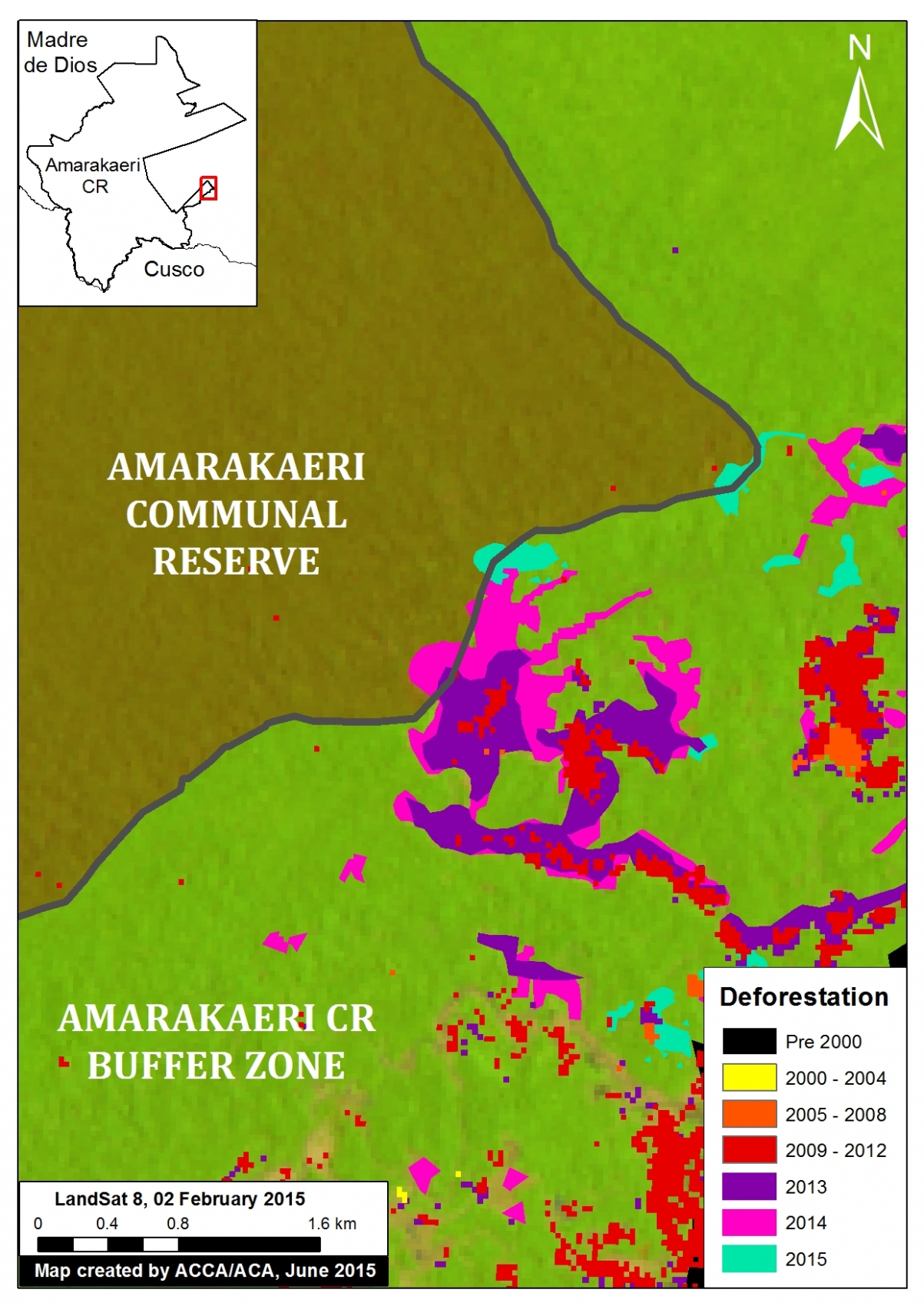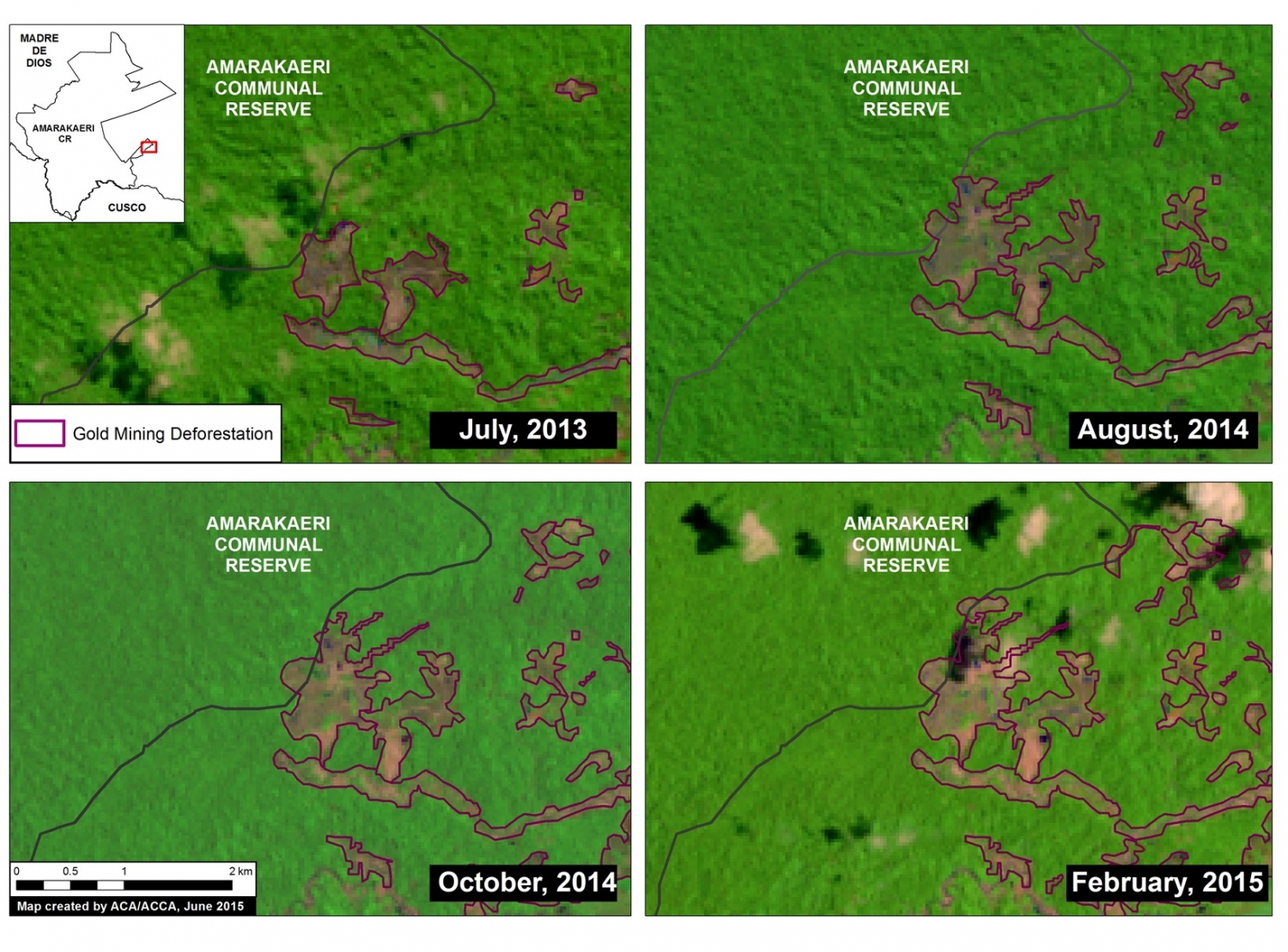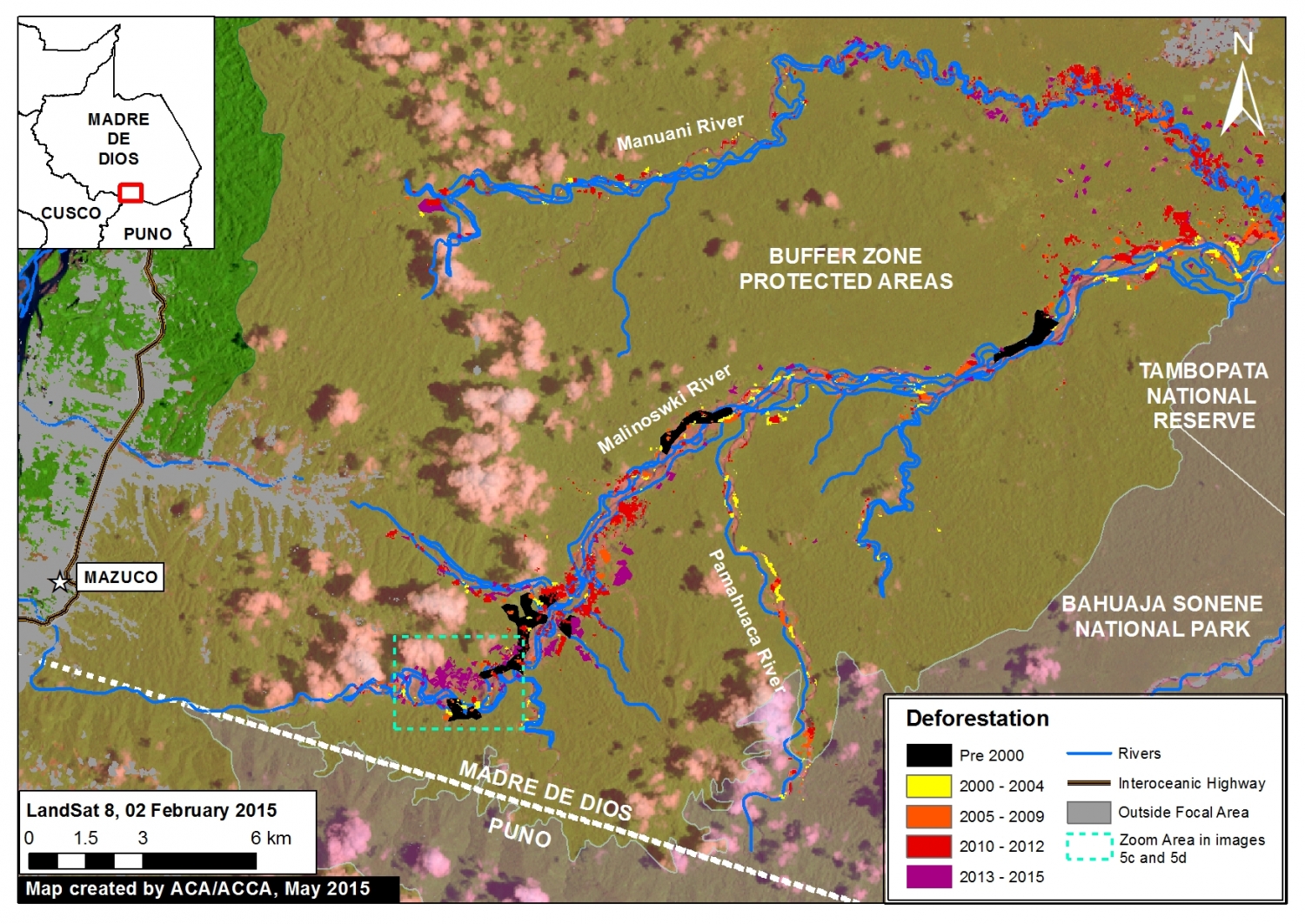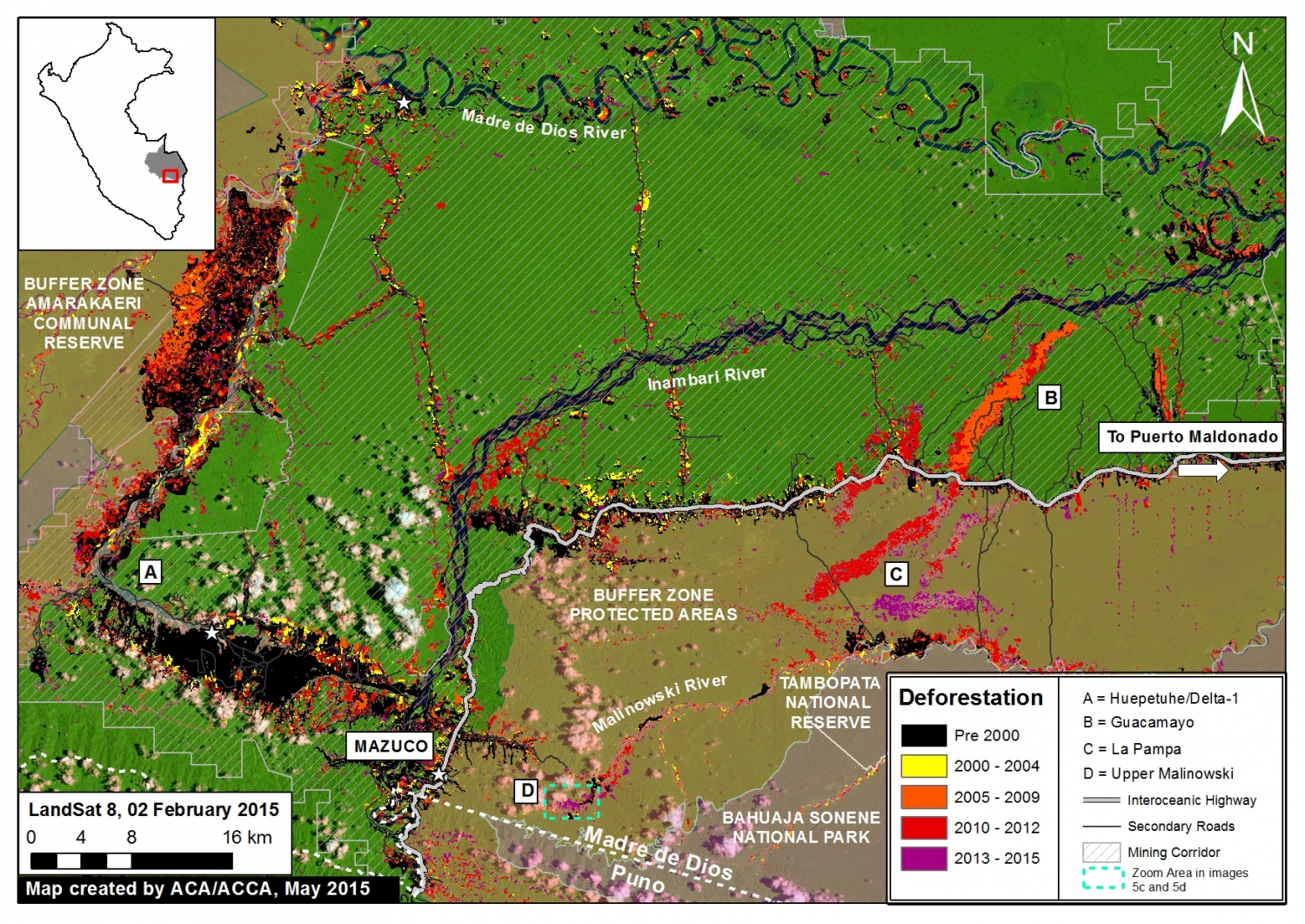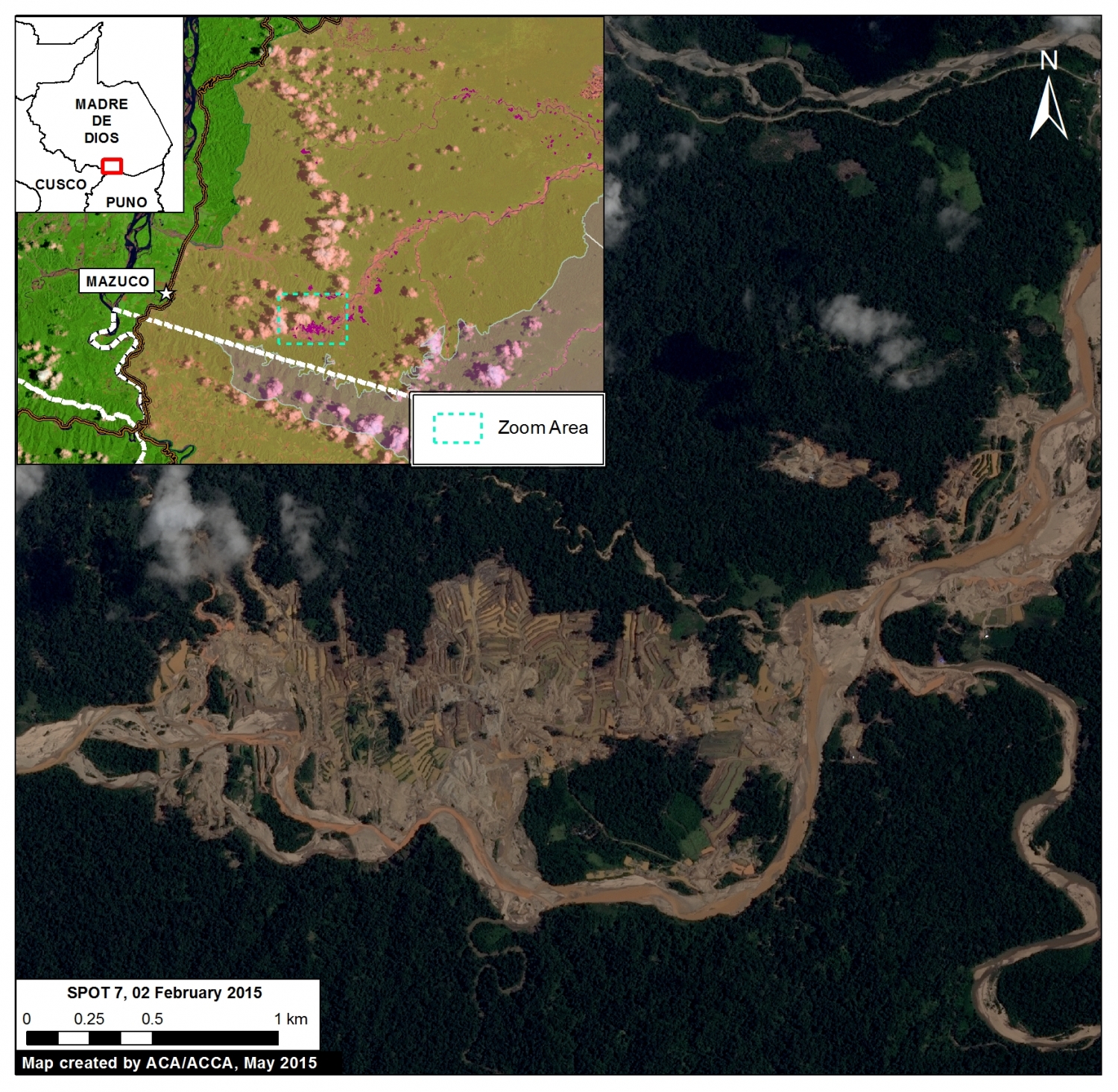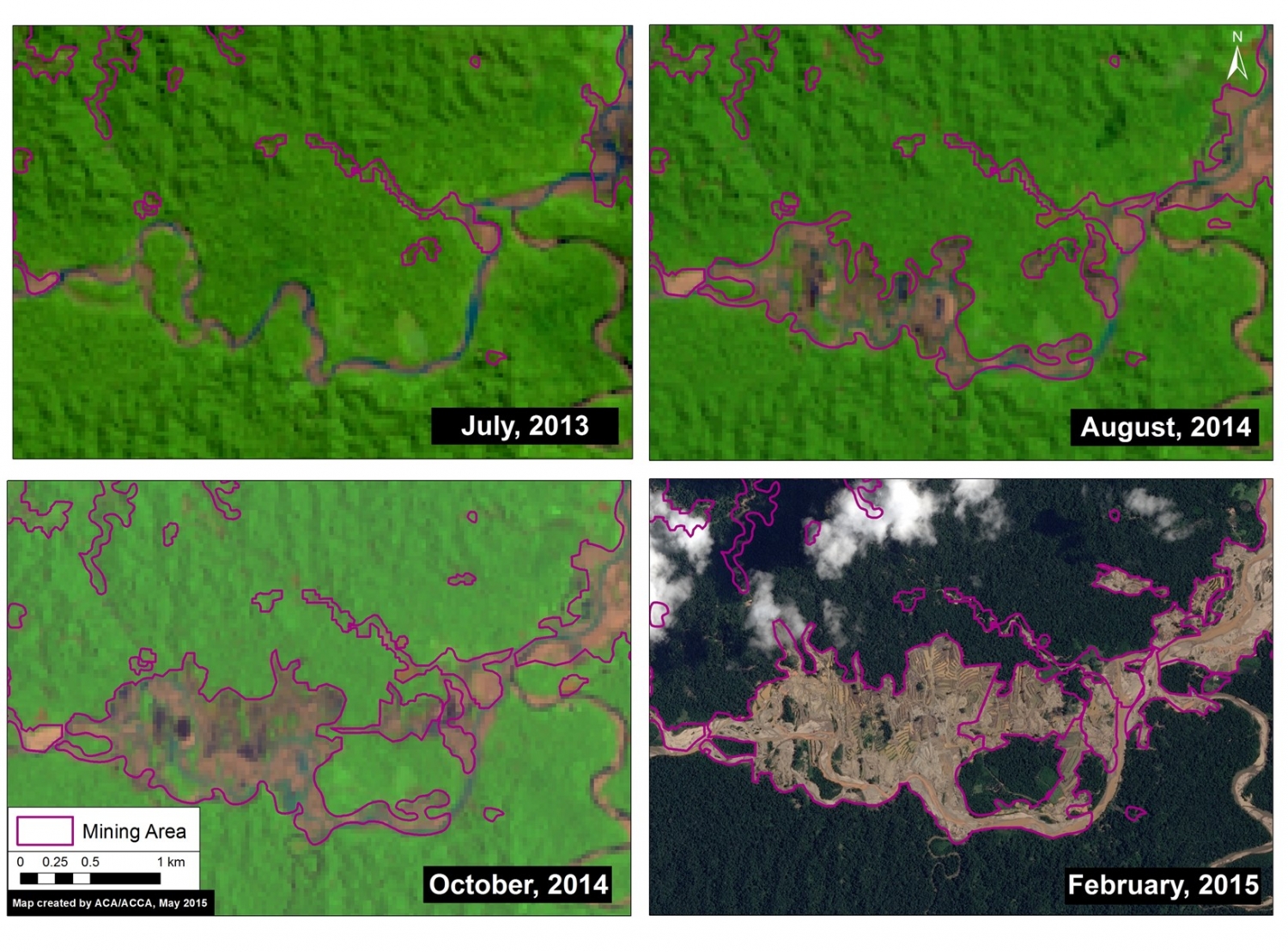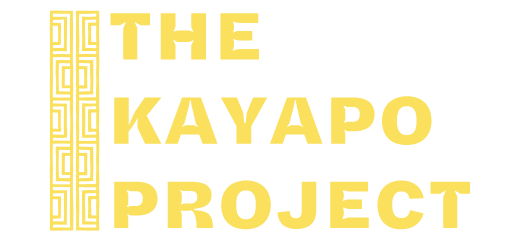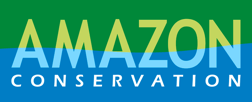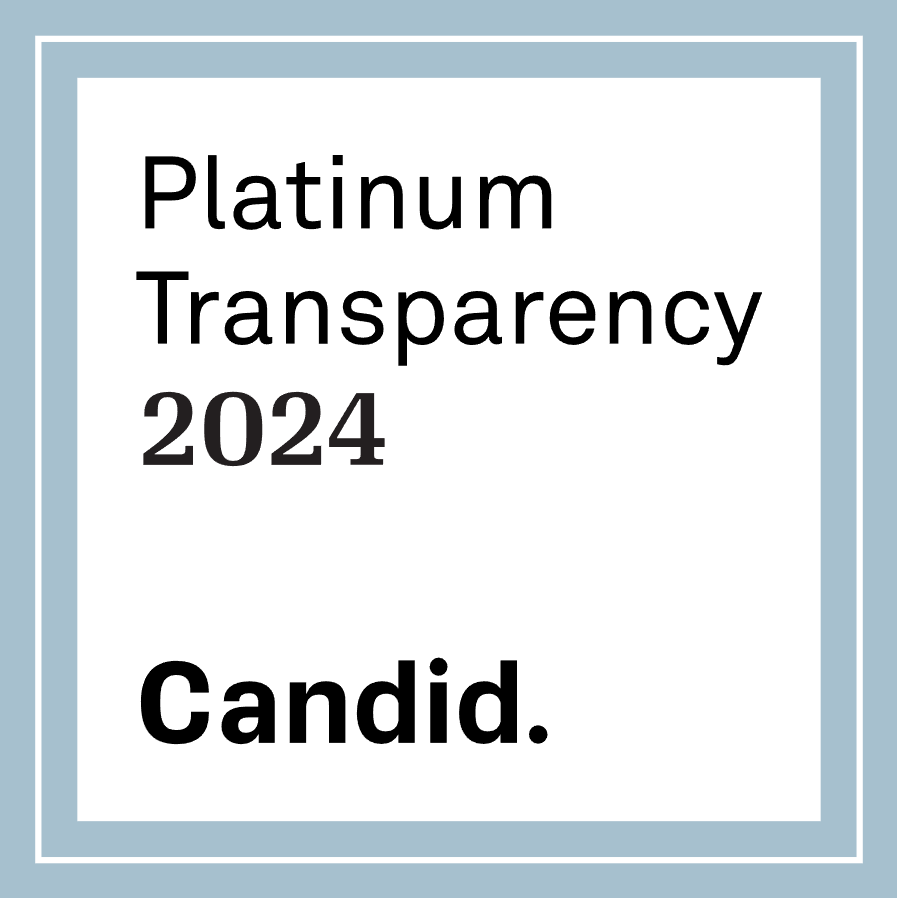The Peruvian national protected areas system, known as SINANPE, is critically important to Amazon conservation efforts in the country.
There are currently 46 protected areas in the Peruvian Amazon under national or regional administration*. In total, these areas cover 19.5 million hectares and include a wide variety of designations, including areas of indirect use (those with strict protection, such as National Parks) and direct use (those that allow the exploitation of natural resources, such as National Reserves) under national administration and Regional Conservation Areas under regional administration.
Here, MAAP #11 presents a deforestation analysis that demonstrates the effectiveness of protected areas in relation to the surrounding landscape in the Peruvian Amazon.
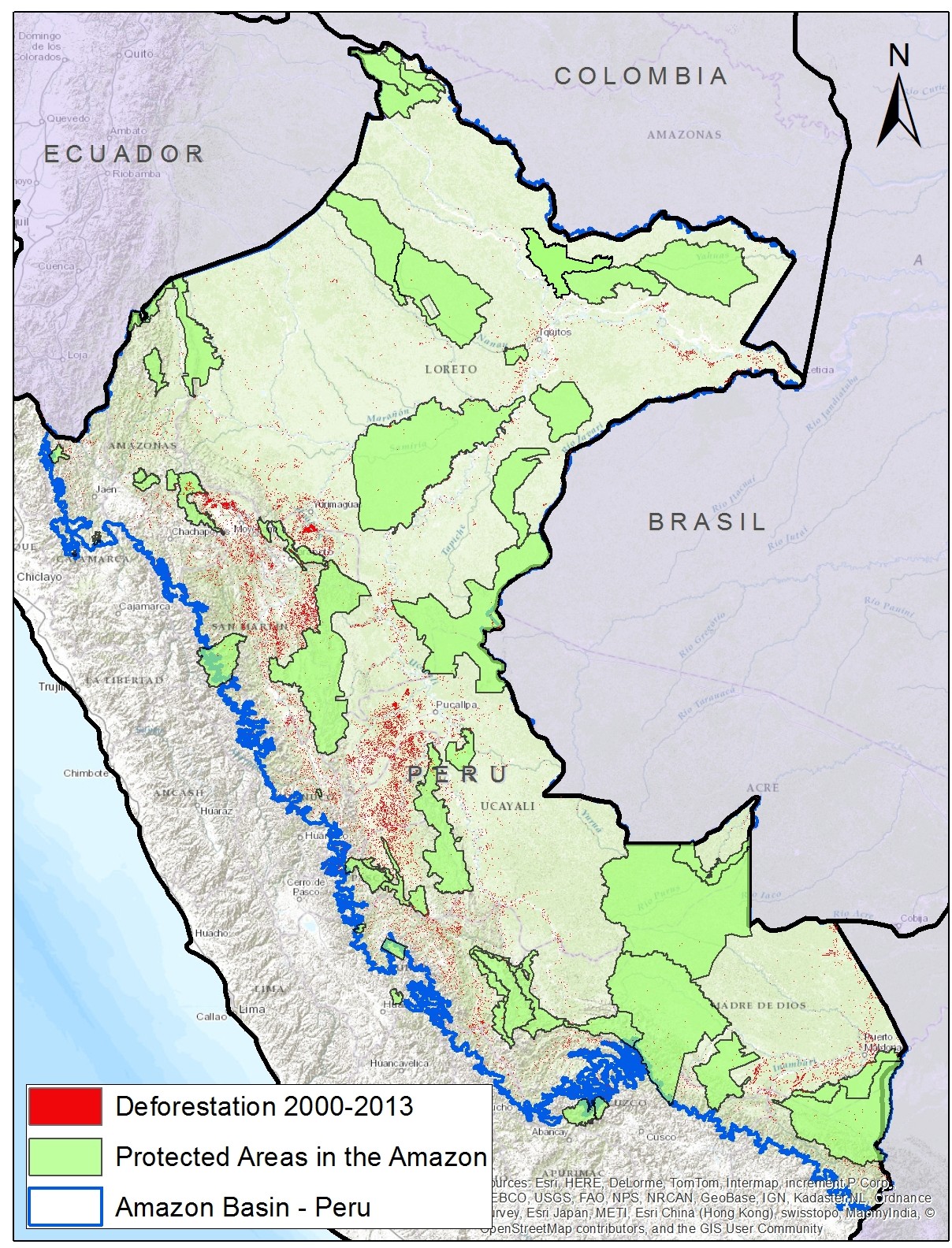
Image 11a. Recent forest loss in relation to protected areas in the Peruvian Amazon. Data: SERNANP, PNCB-MINAM/SERFOR-MINAGRI, NatureServe.
Key Results
Image 11a shows recent (2000 – 2013) forest loss patterns in relation to the current national protected area system in the Peruvian Amazon (Image 11b shows the same, but with zooms of the northern, central, and southern regions, respectively). Note that some of the documented forest loss surely comes from natural causes, such as landslides or meandering rivers.
Across all protected areas administered nationally (such as National Parks and National Reserves), we found that deforestation was significantly lower starting at 2 km within their boundaries compared to outside them (see Images 11b and 11c).
The rate of deforestation outside of protected areas is more than twice of that within them (within the 5 km buffer zone study area, see below).
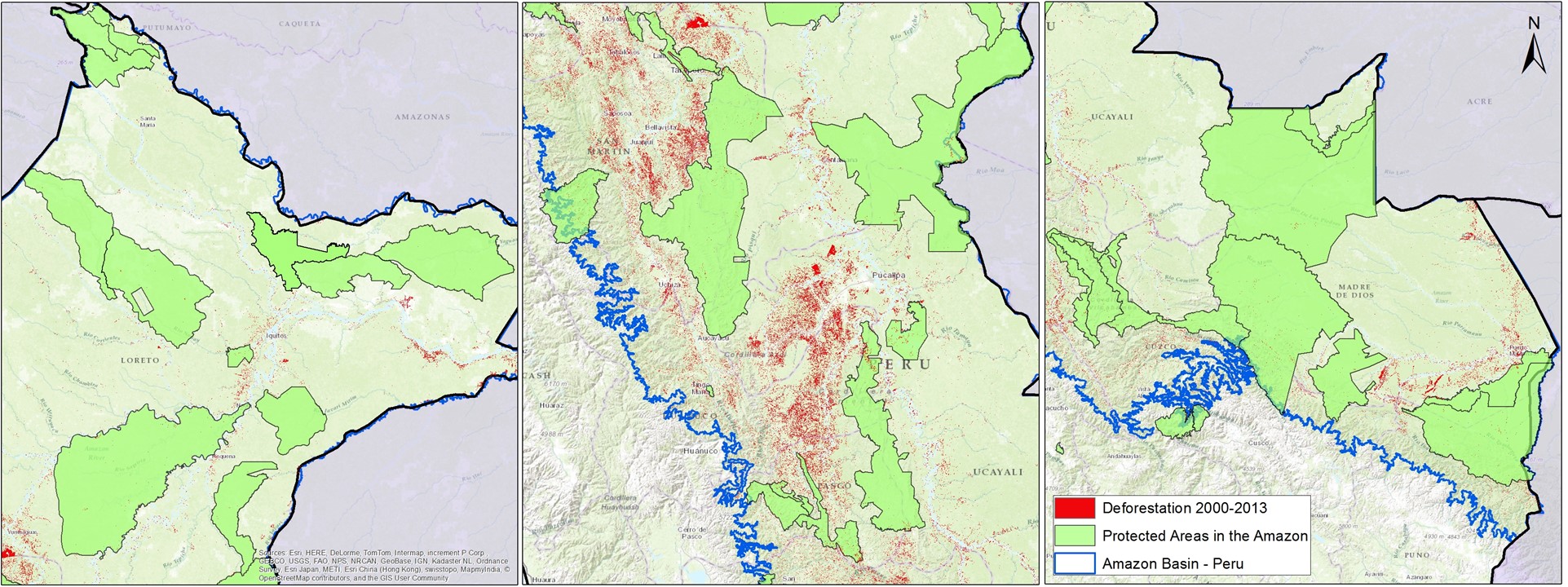
Image 11b. Regional zooms (north, central, south) of recent forest loss in relation to protected areas. Data: SERNANP, PNCB-MINAM/SERFOR-MINAGRI, NatureServe.
Deforestation Analysis – Methods
We conducted a basic analysis of all protected areas administered nationally (National Park, National Sanctuary, Historic Sanctuary, National Reserve, Protection Forest, Communal Reserve, and Reserved Zone) to estimate their relative effectiveness in controlling deforestation in relation to the surrounding landscape. The forest loss data comes from the National Program of Forest Conservation for the Mitigation of Climate Change (PNCB) of the Ministry of the Environment of Peru. This deforestation analysis had two key components.
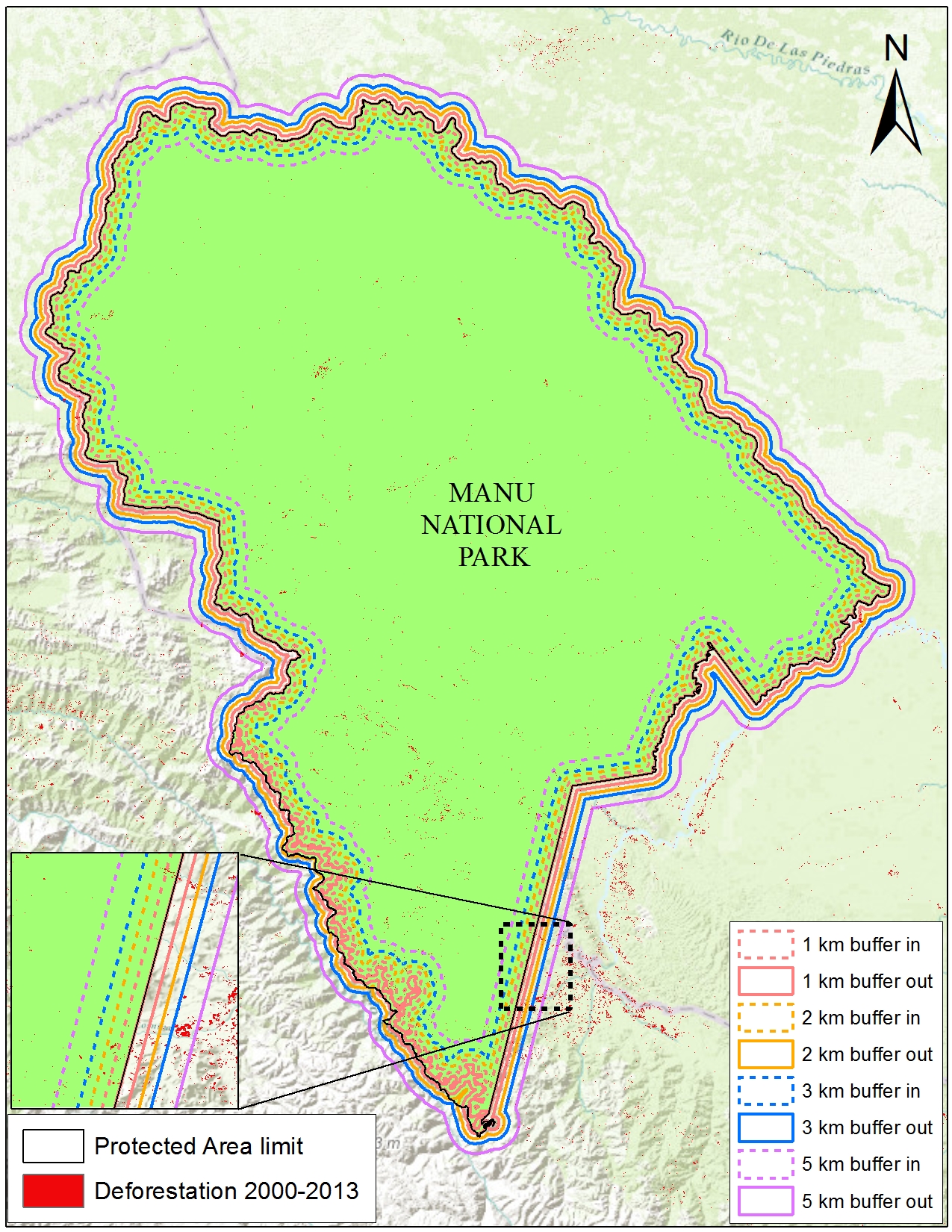
Image 11c. Illustration of spatial intervals for deforestation analysis.
First, we compared recent forest loss within versus outside each protected area at four different spatial intervals: 1 km, 2 km, 3 km, and 5 km (see Image 11c). In other words, starting at the boundary line for each area, we created a 1 km buffer both inside and outside the area and compared the relative (forest loss/area *100) deforestation. We then repeated this analysis for the other intervals. The establishment of these intervals areas is based on the assumption that the closer to the limits of each protected area, deforestation could be more related to anthropogenic activities in surrounding areas, which is expected to reduce the effect of natural losses due to changes in the courses of rivers and landslides in unstable areas.
Second, we controlled for protected area creation date. If an area was created prior to 2000, such as Manu National Park created in 1973, we used the complete 2000-2013 PNCB forest loss dataset. If an area was created after 2000, such as Alto Purus National Park created in 2004, we used just the forest loss dataset for the years following its creation (in this case, 2005-2013).
This analysis was designed to show general patterns, not be a definitive evaluation of the effectiveness of protected areas. A more complete evaluation could control for additional variables (such as slope, elevation, climate, distance to population centers, etc…).
Deforestation Analysis – Results
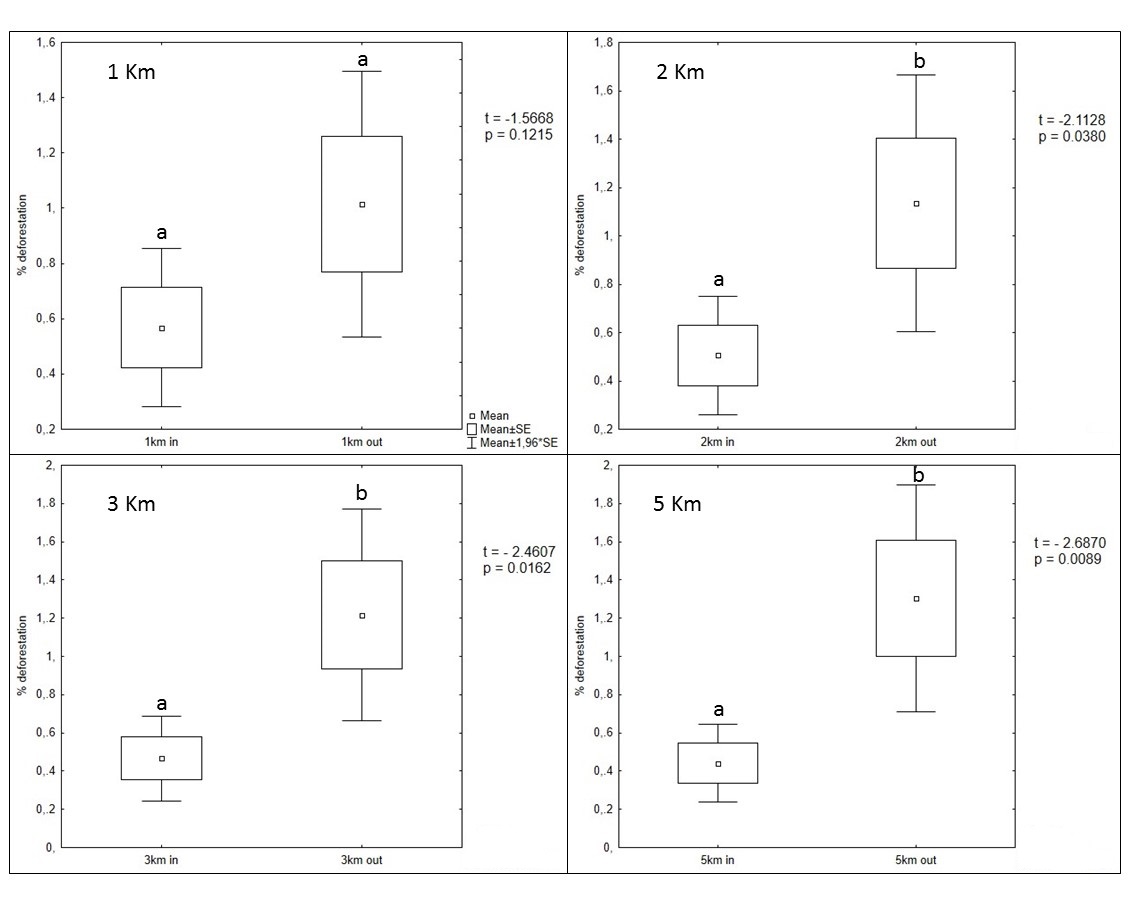
Image 11d. Results of deforestation analysis.
Across all protected areas administered nationally, we found that deforestation was significantly lower starting at 2 km within their boundaries compared to outside them (p < 0.05) (see Image 11d). The significance level increased by an order of magnitude between 3 and 5 km. We didn’t detect a significant difference between 1 km within and outside the protected area boundaries.
On average, we found that 0.5% of the area within protected areas experienced forest loss between 2000-2013, while outside the protected areas was nearly 1.2%. In other words, the rate of deforestation outside of protected areas is more than twice of that within them. Furthermore, as mentionned earlier, some forest loss within the protected areas surely comes from natural causes, such as landslides or meandering rivers.
Related Studies
As noted above, this analysis was designed to show general patterns, not be a definitive evaluation of the effectiveness of protected areas. Several other recent studies have pointed out the importance of controlling for additional variables.
In a study focused on the Brazilian Amazon, Pfaff et al (PLOS ONE 2015) found that is important to control for the location of protected areas, which is often in more isolated areas with lower deforestation pressures.
Specifically regarding the Peruvian Amazon, a study by the research organization Resources for the Future (2014) found that “the average protected area reduces forest cover change”. This study rigorously controlled for a number of key variables (such as elevation, slope, climate, and distance to cities), but used older and more limited forest loss and protected areas data.
*This total of 46 protected areas includes: a) all the categories considered part of SINANPE (including Reserved Zones and Regional Conservation Areas) except for Private Conservation Areas, and b) all areas that are totally or partially located in the Amazon basin.
SERNANP Response
In response to this article, SERNANP (the Peruvian protected areas agency) issued this statement:
Actualmente el SERNANP viene realizando una verificación en campo por parte del personal guardaparque de las Áreas Naturales Protegidas durante sus acciones de patrullaje merced a la información de pérdida de bosque proporcionada por el Ministerio del Ambiente, periodo 2013-2014, a fin de determinar si el cambio de la cobertura se debe a causas naturales o antrópicas. Esto podrá complementar el análisis desarrollado por ACCA.
Es importante señalar, que el SERNANP viene aplicando el enfoque ecosistémico en la planificación y gestión de las Áreas Naturales Protegidas, en este sentido desarrolla acciones que permiten evitar la deforestación al interior de estos espacios protegidos, pero a su vez nos proponemos que en su entorno se desarrollen actividades compatibles con la conservación que eviten el fraccionamiento del hábitat y permitan la sostenibilidad de la conservación de las Áreas Naturales Protegidas a futuro.
En este sentido, considerando de vital importancia generar alianzas con las entidades que toman decisiones en el territorio fuera de estos espacios, hemos establecido a nivel nacional un trabajo conjunto con los Gobiernos Regionales a fin de integrar las Áreas Naturales Protegidas dentro de corredores de conservación con otras modalidades de conservación que se impulsan a través de sus sistemas regionales de conservación. Con ello, se esperaría detener el fraccionamiento de hábitat alrededor de las Áreas Naturales Protegidas, lo que podría conllevar a su insostenibilidad a futuro. Al respecto, es preciso mencionar que los Sistemas Regionales de Conservación cuentan con un espacio de coordinación donde se reúnen las principales instituciones que gestionan territorio y en la cual se discuten las iniciativas de desarrollo social y económico para que se realicen en armonía con la conservación de la biodiversidad del país, el SERNANP forma parte de estos espacios a nivel nacional.
Citation
Finer M, Novoa S (2015) Importance of Protected Areas in the Peruvian Amazon. MAAP: Image #11. Link: https://www.maapprogram.org/2015/08/image-11-protected-areas
